
Basketball is full of passion and emotion. Still, sometimes that passion can turn into hatred toward certain figures in the game. Whether it’s a coach who always seems to win, a player with a bad attitude, or a media member who rubs people the wrong way, the list of most-hated figures in basketball history is long.
The top 60 individuals who have been a target of intense animosity and hostility from fans. From notorious coaches and players to controversial media personalities, these are the people who have brought the heat and earned the ire of basketball fans everywhere. So, buckle up and get ready to relive some of basketball history’s most heated rivalries and controversial moments.
71. Greg Oden
Greg Oden played for Ohio State and is among the Most-Hated Figures in US College Basketball History. While it’s unclear whether ESPN’s Bill Simmons harbors hatred towards him, he certainly has expressed disappointment.

Oden’s on-court performance has been regularly described as “overrated” and “unimpressive” since he first arrived on campus in 2006. Despite this, he rode the “hype train” throughout his one year at Ohio State and his four-year run in the association, which was restricted by injuries.
70. Phil Ford
Phil Ford, who played for North Carolina, is included in the list of Most-Hated Figures in US College Basketball History. Despite having great success as the point guard at UNC from 1974-78, where he was a two-time consensus All-American and won multiple national ‘Player of the Year’ awards during his senior season, he is still considered one of the most irritating floor generals of all time.

This is because Dean Smith, his coach, employed Ford to run the “villainous” “Four Corners” offense, where four players stand in the corners of the offensive half-court while the fifth dribbles the ball in the middle.
69. Ben Simmons
Over the last three seasons, Ben Simmons has given fans plenty of reasons to harbor ill feelings toward him. Philadelphia fans harbor resentment for Simmons, not only because of his on-court performance but also due to the way he maneuvered to leave the city. Known not to be a high-scoring player, Simmons’s reluctance to take open jump shots is practically a basketball sacrilege. His timid playing style cost the Sixers a place in the 2021 Eastern Conference Finals, but what followed this incident was perhaps even more unforgettable.
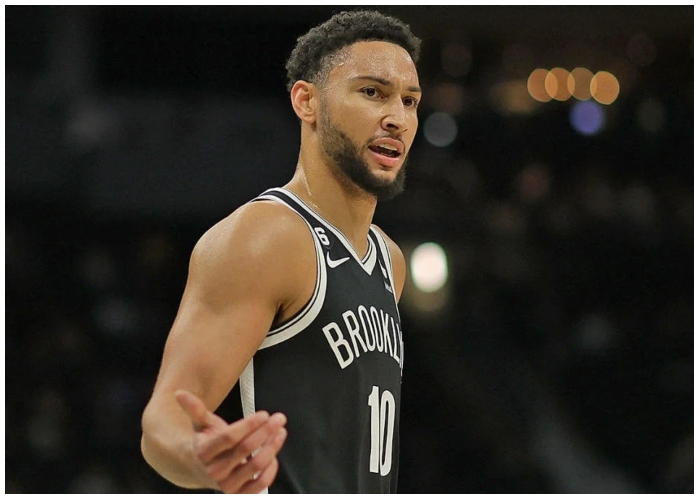
Following intense criticism from the media, fans, and even his teammates and coaches, Simmons demanded a trade away from Philadelphia, thereby inciting further animosity from the Philly devotees. Just when it seemed like things might improve, Simmons appeared at practice with his phone in hand and pocket, refusing to partake in several drills. This behavior resulted in his ejection from practice and eventual trade to Brooklyn later that season. While his move to Brooklyn has somewhat pacified the situation, the animosity towards him remains palpable globally due to his actions.
68. Kareem Abdul-Jabbar
Lew Alcindor, who played for UCLA, is featured in the list of Most-Hated Figures in US College Basketball History. His game was so disliked that the NCAA changed the rules to stop him. In March 1967, just two days after Alcindor, who later became Kareem Abdul-Jabbar, led UCLA to the NCAA championship, the NCAA outlawed dunks.

Interestingly, dunks were not allowed again until after the Bruins had won seven more titles, indicating the impact that Alcindor had on the game of basketball.
67. Wilt Chamberlain
Wilt Chamberlain played for Kansas and is one of the Most-Hated Figures in US College Basketball History. Unfortunately, he played college basketball when racial segregation off the court was still prevalent. Due to his physical size and skills, Chamberlain was the target of continuous racial slurs.

His teammate John Parker recounted a specific game played in Dallas where the crowd was brutal towards them. They were spat on, pelted with debris, and subjected to the vilest racial epithets possible, highlighting the racism and discrimination Chamberlain faced during his college basketball career.
66. Kelly Olynyk
Regarding the arch-nemeses of the Cleveland Cavaliers, one name sends an unmistakable chill down the spine of their fanbase – Kelly Olynyk. Although LeBron James once held this dubious title, his triumphant return and pivotal role in securing the Cavaliers’ first NBA title has largely redeemed him in the eyes of the fans. But for Olynyk, redemption is a distant dream. Olynyk’s path to becoming the Cavs’ public enemy number one was not a result of consistent rivalry but rather a single, unforgettable incident. In what has been etched into the annals of NBA history as one of the most shockingly unsportsmanlike moments, Olynyk was accused of attempting to dislocate Kevin Love’s arm during the heat of NBA playoffs.
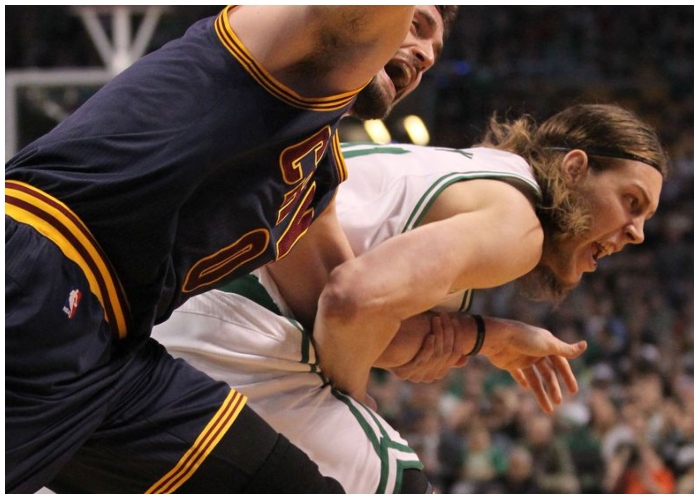
While Love was fortunate enough to walk away from the incident relatively unscathed, the memory of the encounter has proven to be far more persistent. Cavaliers fans, known for their loyalty and passion, have neither forgiven nor forgotten Olynyk’s actions. In the collective memory of the Cleveland fanbase, Olynyk’s play wasn’t just a foul, but an egregious act that solidified his standing as their most despised adversary.
65. Jim Nantz
Jim Nantz, a long-standing college basketball broadcaster, is featured in the list of Most-Hated Figures in US College Basketball History. He is best known for his lead-in to the “One Shining Moment” conclusion to the NCAA Tournament Championship Game.

However, over the years, Nantz’s comments have become increasingly rehearsed, artificial, and irritating to viewers. In a 2009 Big Ten Tournament game between Ohio State and Michigan State, Nantz, and Clark Kellogg discussed a graphic of the top 10 RPI teams. Nantz’s attempt at humor fell flat when he punctuated the conversation by saying, “And tomorrow, the RPI will be RIP,” further contributing to his unpopularity among college basketball fans.
64. Draymond Green
Over the past decade, Draymond Green has emerged as a player who has drawn the ire of a significant portion of the NBA community. Green doesn’t aim to be everyone’s favorite, and his unapologetic authenticity – characterized by his loud, boisterous demeanor and candid opinions – often rubs people the wrong way. Animosity towards him began to grow in the late 2010s, when he was infamously involved in kicking incidents and consistently received suspensions for accumulating technical fouls due to his on-court antics.

Lately, the disapproval towards Green has been even more pronounced. Notably, he signed with Klutch Sports, a group managed by Rich Paul, the renowned NBA superagent and representative of LeBron James. Since then, it appears Green has made a concerted effort to laud LeBron at every opportunity, a tendency that could induce discomfort in any rational NBA fan. Green has flipped the script on his stance towards James, transforming from a competitor to someone who goes out of his way to greet LeBron mid-game. It would be more enjoyable to revive their rivalry instead of continuing this somewhat exaggerated camaraderie, wouldn’t it?
63. Renardo Sidney
Renardo Sidney, who played for Mississippi State, is included in the list of Most-Hated Figures in US College Basketball History. He has been one of the biggest college basketball divas since high school, attracting a lot of national recruiting attention at a young age.

Unfortunately, Sidney’s behavior has caused chaos repeatedly, culminating in an incident last season where he and his Mississippi State teammate and roommate, Elgin Bailey, got into a physical altercation in the stands after a game in Hawaii, fueling his unpopularity among college basketball fans.
62. Rajon Rondo
In the ongoing saga of the Dallas Mavericks, there’s one player whose name still conjures a storm of frustration and disappointment – Rajon Rondo. Once heralded as the potential savior who would lead the team back to the NBA Finals, Rondo’s arrival was initially met with high hopes and anticipation. An exceptional talent known for his prowess with the Boston Celtics, his addition to the Mavericks roster was expected to be a game-changer. The reality, however, proved to be a stark contrast to these lofty expectations. Instead of the dedicated, passionate playmaker fans were hoping for, Rondo seemed to become a shadow of his former self. His seeming lack of commitment to the team, contrasting sharply with his previous fervor on the court, left a bitter taste in the mouth of the Mavericks’ faithful.

The most notorious episode came when Rondo, in an almost casual display of indifference, walked the ball up the court for an eight-second violation, then sauntered off to the bench. This carelessness epitomized his stint with the Mavericks and cemented his position as a figure of disapproval among the fans. In the Dallas Mavericks’ narrative, Rondo’s role stings with disappointment and a sense of what could have been. His welcome in Dallas is unlikely to be warm should he ever return, a testament to the lingering resentment from his ill-fated tenure.
61. Eric Montross
Eric Montross, who played for North Carolina, is mentioned in the list of Most-Hated Figures in US College Basketball History. From the moment he arrived on the Chapel Hill campus until he moved on to the NBA, he was a target of opposing fans.

His willingness to physically engage with opponents and his “lunch-bucket stoicism” earned him the label of a bully by many, further adding to his unpopularity among college basketball fans.
60. Aubrey Coleman
Aubrey Coleman, who played for Houston, is featured in the list of Most-Hated Figures in US College Basketball History. Despite being a relatively unknown guard, he became infamous for stepping on Arizona’s Chase Budinger during a game and high-fiving a teammate.

Although he was ejected from the game, Coleman insisted it was an accident. On the other hand, Budinger reported having footprints on his face and jersey, further fueling the controversy surrounding Coleman’s actions and his unpopularity among college basketball fans.
59. Joel Embiid
The disapproval directed towards Joel Embiid stems from various sources, yet it isn’t strong enough to earn him a spot in the top 10. Embiid is renowned for teasing fans and his counterparts online and in person. He’s the quintessential provocateur, notorious for engaging in multiple on-court confrontations. Players like Karl-Anthony Towns and Serge Ibaka can vouch for this personally. However, fans have begun to see through Embiid’s antics and are growing tired of them.

Additionally, some grounds for disapproval don’t necessarily warrant the extent of the criticism he receives. A glaring example is the debate among NBA fans over whether Embiid is a superior center/player to the current MVP, Nikola Jokic. The criticism Embiid receives due to fans’ viewpoints seems quite absurd. Firstly, fans often hold far more outrageous beliefs than merely debating between the two top centers in the NBA. Secondly, Embiid, as a competitive player, isn’t one to concede that anyone is superior to him, which is an attitude he should maintain.
58. Kelly Tripuka
Kelly Tripucka, who played for Notre Dame, is listed as one of the Most-Hated Figures in US College Basketball History. He played with intense passion, and as the leading scorer for Notre Dame for all four years, he was inevitably disliked by opposing fans.

His aggressive and relentless play style made him a target of criticism and scorn, further contributing to his unpopularity among college basketball fans.
57. Danny Ferry
Danny Ferry, who played for Duke, is featured in the list of Most-Hated Figures in US College Basketball History. He possessed impressive skill, determination, and talent while wearing the Duke uniform.

As the first player in ACC history to compile 2,000 points, 1,000 rebounds, and 500 assists, Ferry inevitably became a target of opposing fans’ criticism and hatred, further adding to his unpopularity among college basketball fans.
56. Draymond Green
In the annals of the Houston Rockets, one rival looms large and contentious: Draymond Green. Green, known for his unapologetic intensity on the court and a knack for ruffling feathers, has been a consistent thorn in the side of the Rockets, particularly their superstar, James Harden. Green’s ongoing feud with Harden is a notorious subplot in NBA lore, punctuated by on-court skirmishes and a palpable tension that seems to permeate their every encounter.

The animosity reached a fever pitch when Green famously aimed a kick at Harden, which incensed Rockets fans and further entrenched Green as a villain in their narrative. While deeply appreciated by his home crowd at the Warriors, Green’s style of play tends to ruffle feathers elsewhere. He is seen as a player who prioritizes the welfare of his teammates over creating flashy highlight reel moments, an attitude that, while admirable, often results in confrontations with rivals.
55. LeBron James
The animosity directed toward LeBron James is rather intriguing. One primary reason for this dislike is that some people inherently harbor resentment toward those who excel. While LeBron’s self-proclamation as the GOAT (Greatest of All Time) or his occasional flopping antics on the court may add fuel to the fire, they are not the core reasons behind the initial disdain for him or his career. The root cause of this widespread fan contempt for LeBron James lies in the comparisons made with Michael Jordan.

Whenever James nears a significant milestone, like the scoring record in the 2022-23 season, a surge of fans tends to rush to social media platforms to discredit him. While it is a stretch to label him as the undisputed GOAT, denying a credible argument in his favor reflects a refusal to accept reality. James has achieved feats that most NBA players can only dream of. Granted, fans are generally resistant to change, and this is understandable, but it’s unjust to resent someone for accomplishing the things LeBron James has.
54. Reggie Miller
Reggie Miller’s audacious demeanor, coupled with his knack for making game-changing shots, assured that he would consistently rank among the NBA’s most despised players. Even nearly twenty years following his final game with the Indiana Pacers – the only team he played for throughout his 18-year NBA career – the mere mention of Miller’s name still stirs feelings.
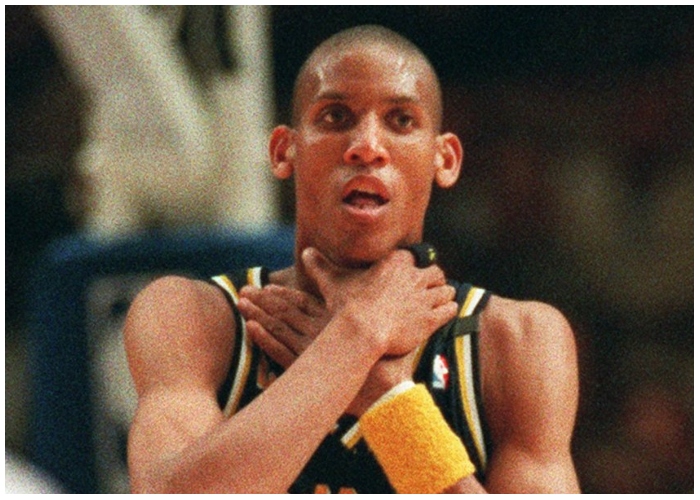
The primary reason for the intense animosity towards Miller was his full embrace of the villain role. Nothing gratified him more than standing against a full arena of rival fans, hoping for his downfall.
53. Kelvin Sampson
Kelvin Sampson, who coached for Indiana, is among the Most-Hated Figures in US College Basketball History. He holds the rare distinction of being reviled in two consecutive college coaching stops. After achieving significant success at Oklahoma, Sampson left amid NCAA investigations. When he arrived in Indiana, many believed he would take the opportunity for a fresh start and change his recruiting habits.

However, that was not the case. Indiana was slapped with a three-year probation due to a laundry list of violations. During a confidential meeting with the NCAA violations committee, Indiana University President Michael McRobbie apologized for employing Sampson and stated that it was “a risk that should not have been taken,” further highlighting the negative impact Sampson had on the college basketball community.
52. Paul George
In the Indiana Pacers’ narrative, Paul George is a prominent character who evokes a whirlwind of emotions. Once hailed as the chosen one, George was supposed to be the beacon who would guide the Pacers to the pinnacle of NBA glory. However, the tale takes a different turn, and instead of becoming a local legend, George becomes a symbol of unfulfilled promises. Instead of leading the Pacers to victory, George wanted to leave Indiana, effectively forcing his way out.
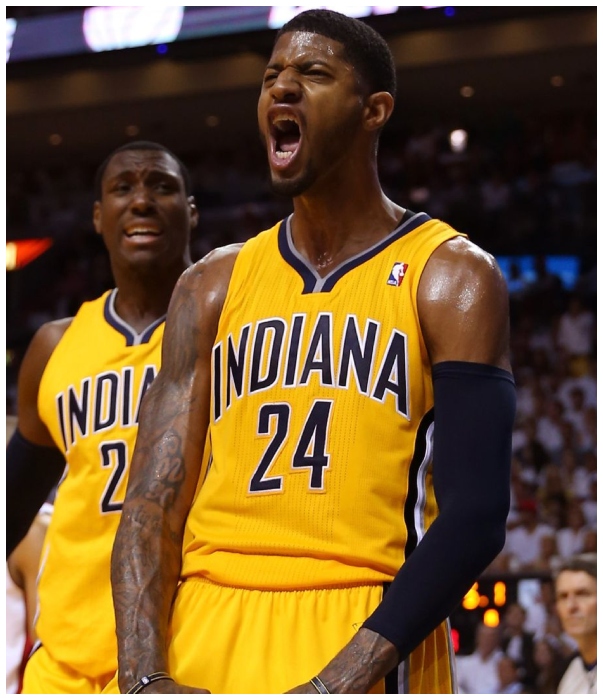
The player who was once seen as Indiana’s hope now dons the colors of the Clippers, forming a formidable duo with Kawhi Leonard, much to the chagrin of Pacers fans. Still nursing the wounds of George’s departure, Indiana isn’t keen on welcoming him back anytime soon. There’s a certain sense of vindication among Pacers fans, who believe they emerged victorious in the trade that sent George to the Oklahoma City Thunder.
51. Gene Keady
Gene Keady, who coached for Purdue, is featured in the list of Most-Hated Figures in US College Basketball History. He was known for being a fierce sideline competitor, working the referees almost as hard as the Boilermakers played on the court.

Due to his competitive nature and great success as a coach, Keady became the target of most opposing fans’ ire, further adding to his unpopularity among college basketball fans.
50. Bill Walton
Bill Walton played for UCLA and is among the Most-Hated Figures in US College Basketball History. His outspoken nature and talent on and off the court have been prevalent since his college basketball days.

Given his personality and outspokenness, it is speculated that his tweets would have rocked the college basketball world if Twitter had been available during his college years. Despite being considered one of the best college players, Walton’s personality and actions contributed to his unpopularity among college basketball fans.
49. Kenyon Martin
Kenyon Martin, who played for Cincinnati, is mentioned in the list of Most-Hated Figures in US College Basketball History. He was a dominant force on the court, averaging 18.9 points, 9.7 rebounds, and 3.5 blocks per game during his senior year.

Sports Illustrated’s Grant Wahl accurately described Martin’s dominance when he said that his dunks were not just dunks but detonations. He also visibly frightened opposing players, making them miss shots just by his presence around the basket, highlighting his impact on the game and his unpopularity among college basketball fans.
48. Mark Madsen
Mark Madsen, who played for Stanford, is included in the list of Most-Hated Figures in US College Basketball History. He earned the nickname “Mad Dog” for his tenacious and relentless style of play, making up for his lack of sheer talent with grit and drive.

Unfortunately, Madsen’s relentlessness often grated opposing players and fans, further adding to his unpopularity among college basketball fans.
47. Shane Battier
Shane Battier, who played for Duke, is featured in the list of Most-Hated Figures in US College Basketball History. He was known for his willingness to sacrifice his body on defense and was a three-time NABC Defensive Player of the Year.

His defining skill, taking charges, drove opponents and their fans crazy, further adding to his unpopularity among college basketball fans. Despite his impressive achievements and contributions to basketball, Battier’s playing style made him a target of criticism and scorn.
46. James Harden
James Harden isn’t an unpleasant individual by any means. Relative to some of the most notorious NBA villains, he’s remarkably agreeable. However, it’s not his personality that has sparked widespread disdain among NBA fans.
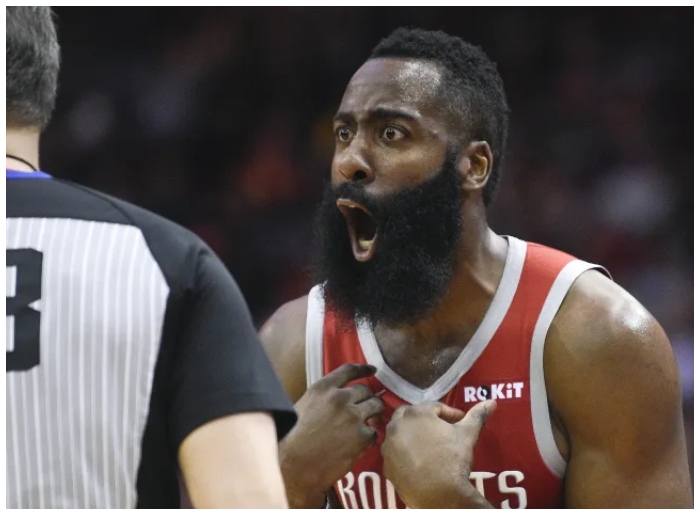
His playing style — a self-centered approach that made it challenging for him to collaborate with other star players brought to Houston to join him. And then there are the playoffs. The playoffs, indeed. Few players in NBA history have shown such a stark contrast between their stellar regular-season performances and their underwhelming postseason showings as Harden has.
45. Adolph Rupp
Adolph Rupp, who coached for Kentucky, is listed as one of the Most-Hated Figures in US College Basketball History. He coached the Kentucky Wildcats from 1930 to 1972, winning 876 games in 41 years of coaching and ranking fourth in total victories by a men’s NCAA Division I college coach.

Rupp was known for his unique coaching style. According to Bill Spivey, a Kentucky star in the 1950s, Rupp wanted everybody to hate him, and he succeeded. He called his player’s names, some of which they had never heard before, further contributing to his unpopularity among college basketball fans. Despite his success as a coach, Rupp’s personality and actions negatively impacted the college basketball community.
44. Gary Paytone
Gary Payton, who played for Oregon State, is mentioned in the list of Most-Hated Figures in US College Basketball History. He was an outstanding college point guard, named the Pac-10 conference’s 1987 Freshman of the Year and a consensus All-American in 1990. He was also a three-time All-Pac-10 selection, holding several school records for points, field goals, three-point field goals, assists, and steals.

However, Payton was also known for his well-developed trash-talking talent, beginning shortly after getting off the bus and continuing throughout the game. He loved to try to get in his opponents’ heads, further adding to his unpopularity among college basketball fans. Despite his impressive basketball skills, Payton’s personality and actions on the court made him a target of criticism and scorn.
43. Danny Ainge
Danny Ainge, who played for BYU, is featured in the list of Most-Hated Figures in US College Basketball History. He was an exceptional player, being a first-team All-American and a multiple national Player of the Year award winner.

Ainge was a frustrating opponent, always hustling, diving, and in everyone’s face, contributing to his unpopularity among college basketball fans. However, his most infamous moment was when he went coast-to-coast against Notre Dame in the final seven seconds to beat the Fighting Irish, making March Madness history. Despite his impressive sports achievements, this action cemented Ainge’s reputation as a hated figure among college basketball fans.
42. Eddie Sutton
Eddie Sutton, who coached for Creighton, Arkansas, Kentucky, and Oklahoma State, is featured in the list of Most-Hated Figures in US College Basketball History. He was the first coach to take four schools to the NCAA tournament and reached the Final Four with Arkansas (1978) and Oklahoma State (1995 and 2004). He had an impressive career, going 804-327, spanning five decades.

However, Sutton’s time at Kentucky was marked by NCAA investigations and scandal, leading to the Wildcats being slapped with three years of probation and a two-year ban from postseason play. As a result, his name is not well-received around Lexington, Ky., further adding to his unpopularity among college basketball fans. Despite his success as a coach, his actions and the resulting consequences continue to impact his legacy in the sport.
41. Ron Artest
Ron Artest, who played for St. John’s, is featured in the list of Most-Hated Figures in US College Basketball History. He was known for being hard to stop on the court, with his relentless motor making him a star.

However, while some people considered Artest a tough defender and a powerful player, others simply considered him a thug. His aggressive playing style and several on-court incidents led to his negative reputation among college basketball fans. Despite his talent and success, his actions on and off the court continued to overshadow his sports achievements.
40. Patrick Beverley
As previously suggested, every player on this list could justifiably be considered for the top spot, and Patrick Beverley is no exception. His audacity and consistent provocation are unmistakable characteristics he displays every time he steps onto the court. Regarded as a professional agitator, Beverley is deployed by teammates and coaches to disrupt and annoy the opposition. He pushes adversaries to the edge of frustration with his ceaseless physical prods and pokes while also seeming to believe he’s the world’s greatest player because of it.
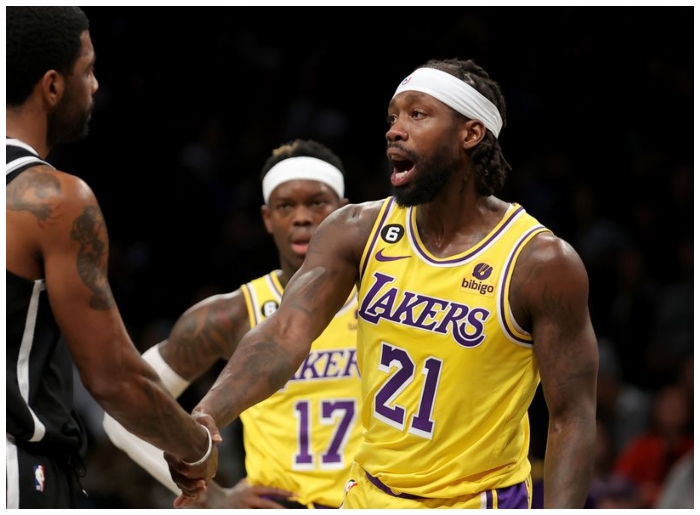
Such self-confidence is commonly seen in professional athletes across all sports, yet Beverley’s performance statistics don’t necessarily support his grand claims. With actions like pushing Chris Paul from behind or choosing to topple over Westbrook instead of going for the ball a few seasons ago, the hostility directed toward Beverley seems quite justifiable. While fans respect Beverley’s hard work and defensive impact on the court, they aren’t fans of the unnecessary antics that accompany his play.
39. Rick Pitino
Rick Pitino is featured in the list of Most-Hated Figures in US College Basketball History for his time coaching at Boston, Providence, Kentucky, and Louisville. He is the first coach in NCAA history to lead three different schools to a Final Four and has an impressive current record of 597-220, with his 600th win in sight.

While he helped restore Kentucky basketball to its place as an elite program following the Sutton-era scandal, his decision to take the Louisville job after a difficult four years as the Celtics head coach was seen as unforgivable by some in the Bluegrass state. Despite his success on the court, his reputation was tarnished by a series of off-court scandals, including an extramarital affair and a recruiting scandal at Louisville that resulted in the program being stripped of its 2013 national championship.
38. Ralph Sampson
Ralph Sampson’s phenomenal talent and towering height at 7’4″ made him a standout player during his college career. He was named the ACC Player of the Year three times and was a three-time national Player of the Year.

However, his remarkable abilities also drew in unrealistic expectations, ultimately leading to him being a target of ridicule by both opposing and Virginia fans.
37. Allen Iverson
Allen Iverson’s talent on the court was undeniable. He won the Big East Rookie of the Year award and was twice selected as the Big East Defensive Player of the Year at Georgetown. Iverson also became the Hoyas’ all-time leading scorer, averaging 23.0 points per game.

However, Iverson’s behavior, both on and off the court, earned him a reputation as a troublemaker. Many critics claimed he was selfish during games and didn’t always play well with his teammates. This reputation led to many dislikes from opponents’ fans and even some Georgetown supporters.
36. Larry Johnson
Larry Johnson was a dominant force at UNLV, earning two All-American honors and being named the Naismith and Wooden Award winner in 1991.

His ability to take over games was unparalleled. He was a key player in UNLV’s 30-point dismantling of Duke in the 1990 NCAA Championship game. Despite his impressive performances, Johnson and the Runnin’ Rebels were widely criticized for their perceived arrogance and smugness, which only fueled the animosity towards them from opposing fans.
35. Patrick Ewing
Patrick Ewing was a dominant force on the court during his time at Georgetown, helping lead the Hoyas to three NCAA Championship game appearances and a national title in 1984. However, some opponents and fans saw him as a dirty player who didn’t hesitate to use cheap shots and elbows to gain an advantage.

Ewing’s physical play often drew criticism. He was not afraid to retaliate with a shove or a punch if he felt he was being targeted. Despite his success, Ewing’s reputation as a fierce and sometimes controversial player has endured.
34. Russel Westbrook
My ire is particularly directed at those fans who detest Russell Westbrook, a sentiment I find utterly incomprehensible. The animosity was sparked when he secured the 2017 MVP award, a title many believed should have gone to either Stephen Curry or James Harden. We currently exist in a fandom era where staunch supporters of a player won’t hesitate to tarnish another’s reputation if they perceive their favorite has been snubbed. Detractors branded Westbrook a stat-padder despite guiding his team to the playoffs and labeled him a fraud because he lacks an NBA championship title.
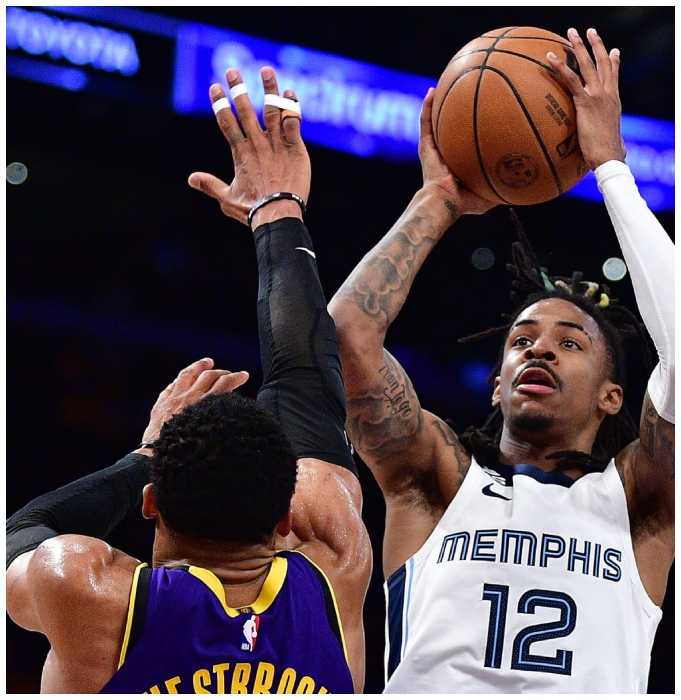
Westbrook’s unpopularity escalated further with Skip Bayless’ incessant use of the mocking moniker ‘Westbrick,’ a term now frequently used in place of his actual name. Critics lambasted his performance in Los Angeles, attributing his struggles to adapt to playing alongside LeBron James and Anthony Davis as the sole cause for the Lakers’ difficulties, despite myriad other issues plaguing the team. The abundant disdain towards Westbrook is patently unwarranted, especially when considering it’s largely rooted in a single poor season alongside The King.
33. Jon Scheyer
Jon Scheyer was a talented player at Duke, earning multiple accolades and helping the team win a national championship in 2010.

However, his constant and exaggerated facial expressions on the court garnered attention and inspired the creation of “Operation Scheyerface.” Despite his success, many opponents and fans found his on-court demeanor irritating.
32. Jerry Tarkanian
Jerry Tarkanian was a legendary coach, having led Long Beach State, UNLV, and Fresno State to great success throughout his career. He has one of the best overall records with 784-202, a feat few can match.

However, Tarkanian was known for his feisty personality and contentious relationship with the media. He gained a controversial reputation that followed him throughout his career. Tarkanian’s teams were famous for their up-tempo offense and oppressive defense, which made them both admired and despised by fans and opponents alike.
31. Bobby Hurley
Bobby Hurley is a well-known name in the college basketball world. He had a stellar career as a point guard at Duke, leading the Blue Devils to back-to-back national championships in 1991 and 1992. He was a first-team All-American in 1993 and earned Final Four MVP honors in 1992.

Hurley still holds the NCAA record for all-time assists with 1,076. However, his success and competitive nature made him a target for opposing fans, who often saw him as arrogant and overbearing.
30. Bob Huggins
Bob Huggins has had an impressive coaching career, with a record of 690–251 (.733) over 28 seasons as a head coach. This puts him among the top eight coaches in winning percentage and top four in victories among active Division 1 coaches.

However, not everyone is a fan of Huggins. Sports journalist Rick Reilly, for example, has been critical of Huggins, going so far as to say that he doesn’t understand his nickname of “Huggy Bear,” claiming that Huggins is about as huggy as an ulcerous porcupine.
29. Jimmer Fredette
Jimmer Fredette was known for scoring on the court, setting records at BYU, and earning national recognition as the 2011 National Player of the Year.

Despite his offensive skills, some critics claimed he was not strong enough defensively and lacked toughness on the court. However, Fredette’s undeniable impact on his team’s success, including leading BYU to the NCAA tournament and securing numerous victories, cannot be overlooked.
28. Michael Beasley
For Miami Heat, one character stands out as a poignant reminder of unfulfilled potential – Michael Beasley. A player of immense talent, Beasley was once envisioned as the next big star for the Heat, a promise that, unfortunately, never came to fruition. The Heat fans, known for their pride and passion, were initially captivated by Beasley’s potential. His early days in Miami hinted at a bright future, yet a lack of focus and dedication overshadowed his talent.

The promising prospect once expected to shine for the franchise gradually faded, leaving fans lamenting what could have been. Beasley’s story is a bittersweet one in the Miami Heat’s narrative. While his talent was never questioned, his inability to harness it for the betterment of the team leaves a sense of disappointment among the Heat faithful.
27. The Cameron Crazies
The Cameron Crazies, known for their wild antics and creative chants, are often considered the country’s most notorious college basketball fans. Their passion and energy have helped make Duke’s Cameron Indoor Stadium one of the most challenging venues for visiting teams.

While some fans appreciate their enthusiasm, others find their behavior offensive and overly aggressive, leading to a love-hate relationship with the Cameron Crazies.
26. Adam Morrison
Adam Morrison’s time at Gonzaga was marked by his incredible scoring ability, leading the nation with 28.1 points per game during the 2005-06 season. However, Morrison was also known for his intense on-court demeanor, wearing his emotions for all to see.

In his final college game, a devastating loss to UCLA in the 2006 NCAA Tournament, Morrison broke down in tears and collapsed on the court, a moment that will forever be etched in college basketball history.
25. Jim Calhoun
With his impressive 39 seasons of coaching, Jim Calhoun has become synonymous with UConn basketball. Under his leadership, the Huskies have claimed three NCAA Championships in 1999, 2004, and 2011.

Calhoun has a remarkable record of 855-358, ranking him as the sixth-winningest D1 coach of all time, with only one win behind Jim Boeheim of Syracuse. Despite his success, Calhoun is infamous for his brash and surly demeanor.
24. John Thompson
John Thompson was not just a head coach at Georgetown but also the architect of Georgetown basketball. He led the Hoyas to win the 1984 NCAA Championship and had a remarkable record of 596-239 with a winning percentage of 71.5%.

However, Thompson was often seen as an imposing and volatile intimidator, which was not easily forgotten despite his success on the court.
23. Bill Laimbeer
At Notre Dame, Bill Laimbeer embodied the blue-collar approach to basketball. His style of play was characterized by relentless aggression, both on and off the ball.

He was known for his willingness to do whatever it took to secure rebounds and gain a competitive edge, even if it meant resorting to unsavory tactics. This reputation would follow him to the NBA, where he became a key member of the notorious “Bad Boys” Detroit Pistons team.
22. Billy Packer
Billy Packer, a former Wake Forest point guard, called 34 consecutive Final Fours and deeply understood the game. However, his commentary may have been among the most disliked by college basketball fans. Many found him grouchy, haughty, and excessively fond of his home Atlantic Coast Conference.

Although Packer’s analysis was sharp, his job was to provide color commentary, not to promote the ACC. The creepy Oklahoma State mascot looming over Packer’s shoulder in a photo only added to his unpopularity.
21. Rudy Gobert
Initially, I was puzzling why Rudy Gobert faced such disapproval from the NBA community. After all, he is one of the top interior defenders in the league, having bagged three Defensive Player of the Year awards for his prowess. But then, the reason behind the modern NBA fan’s deep-seated resentment of Gobert started to become clear. His offensive game is practically non-existent, and yet he commands a higher salary than many players who appear more skillful in the contemporary NBA context.

The animosity doesn’t seem to be targeted at Gobert’s character, aside from his frivolous treatment of the COVID-19 pandemic when he mockingly touched reporters’ microphones at a press conference right before the league was suspended in 2020. Gobert’s unpopularity stems from the fact that the present era is heavily centered on offense and scoring, and high-scoring contests on any given night typically enamor NBA fans. Despite his impact being relatively muted since moving to Minnesota, the resentment towards Gobert appears to be somewhat unjustified.
20. J.J. Redick
J.J. Redick was a remarkable shooter during his college basketball career. For two consecutive years, he was widely recognized as the national Player of the Year and the ACC Player of the Year. However, Redick also earned the title of the “most hated (current) athlete in America” by some, as reported by Travis Clay on CBSSports.com.

Redick’s personal phone number was discovered by rival fans from Maryland and North Carolina. He received an estimated 50 to 75 hate calls daily from these opposing fans.
19. John Wall
John Wall was a highly talented freshman point guard in college basketball. Had he been eligible to enter the NBA straight out of high school, he would have most likely been the first player selected in the 2009 draft.

However, playing for John Calipari at Kentucky did not shield him from scrutiny or criticism.
18. Marshall Henderson
Marshall Henderson was a highly skilled basketball player during his time at Ole Miss, known for his scoring abilities. He helped his team reach the NCAA tournament for the first time in over a decade and even scored an upset victory over Wisconsin. However, Henderson’s reputation was marred by his brash and cocky behavior on and off the court, which often drew negative attention.

He was arrested for several charges while still in college, and his antics, such as taunting opponents and flaunting his jersey, made him one of the most hated players in NCAA basketball history. Despite his talent, Henderson’s divisive personality earned him a place on the list of the most hated players of all time in the sport.
17. Joakim Noah
Joakim Noah’s distinctive blend of size, athleticism, and exuberance made him a formidable presence on the court. With his help, the Florida Gators won consecutive NCAA Championships. Noah was named the Final Four Most Outstanding Player during his second year.

However, his high energy and unorthodox personality often made him the target of opposing fans’ taunts and criticisms. No matter where the Gators played, Noah’s antics were sure to attract positive and negative attention.
16. Jimmy Butler
In Minnesota Timberwolves, Jimmy Butler is a prominent character who has sparked considerable controversy. A talented player on the court, Butler’s off-court actions and comments have made him a divisive figure among the Timberwolves faithful. Butler’s public critique of the Wolves organization, in which he questioned their ambition to win, left a sour taste among the fans. His lack of faith in prominent team members, such as Andrew Wiggins and Karl-Anthony Towns, further heightened the tension.
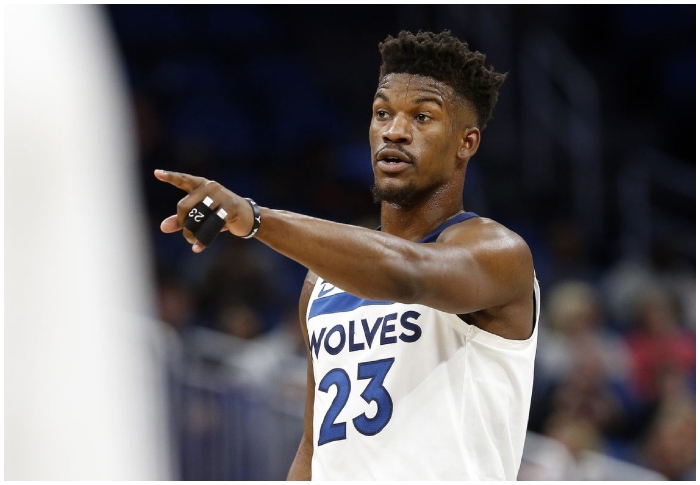
Butler’s insistence on a trade out of Minnesota, causing significant locker room unrest, didn’t sit well with fans who value team unity. Butler’s actions have stained his legacy in Minnesota despite his undeniable talent. The fans, with their eyes on the franchise’s future, didn’t appreciate his alienation of key team members. As a result, Butler is likely to be greeted with a chorus of boos whenever he steps foot on the Timberwolves’ home court.
15. Dick Vitale
Dick Vitale is a polarizing figure in college basketball broadcasting. He has a legion of fans who enjoy his enthusiasm and passion for the game. However, those who dislike him find his constant adoration for Duke Blue Devils unbearable. Vitale doesn’t make excuses for his love of Duke and is proud of his association with the program.

Critics also claim that he often overshadows the game with his showmanship and catchphrases rather than focusing on the action on the court.
14. Greg Paulus
Greg Paulus served as the starting point guard at Duke for his first three seasons until Nolan Smith emerged as a key player. However, it’s unclear how the hatred for Paulus escalated to the extreme level it did.

Fans relentlessly heckled him during games, and online forums were dedicated to continuing the criticism of his performance.
13. Grayson Allen
From my experience, it’s rare to find a basketball fan who genuinely appreciates Grayson Allen. Even as a Duke fan, I find tolerating him for more than a few minutes challenging. The primary cause of the animosity aimed at him stems from his notorious conduct on the basketball court. This behavior traces back to his Duke days when he was repeatedly seen tripping and deliberately provoking opponents, seemingly attempting to secure some kind of edge, all while presuming that coaches, players, and spectators would overlook these overt actions.

It’s not only his on-court antics that spark resentment but also his reactions to them. There are instances when he has indifferently walked away after possibly injuring another player. At other times, he feigns innocence, as if he did nothing wrong, despite being witnessed by thousands of onlookers. While Grayson Allen certainly earned his place in the NBA for a reason, I struggle to recall a single instance when I heard someone say, “Yes, I definitely like Grayson Allen.”
12. Anthony Davis
Davis’s insistence on leaving the team, a move many saw as him abandoning the Pelicans, did not sit well with the fanbase. Such actions are often considered a betrayal in sports, and Davis was no exception to this rule. Whenever Davis steps onto the court now, he will likely be greeted with a chorus of boos from the crowd, a testament to their lingering resentment. Anti-Davis signs are a common sight during games, a vivid reminder of the fractured relationship between players and fans.
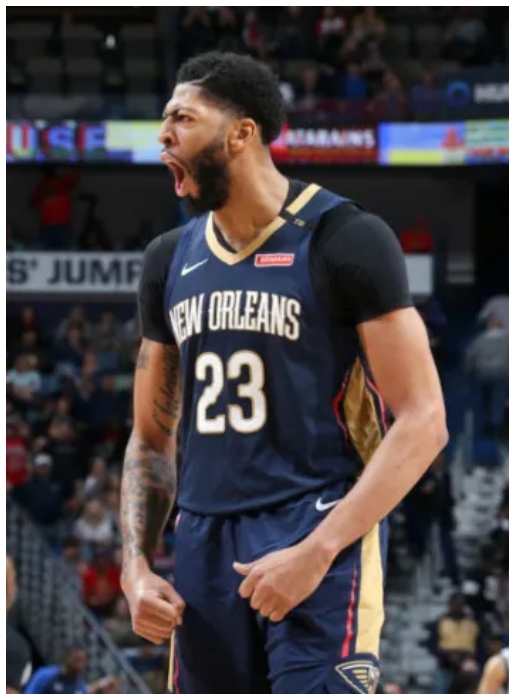
Despite Davis’s undeniable talent and the exceptional performances he once delivered for the Pelicans, his decision to force his way out of the team has dramatically shifted the fans’ perception of him. In the New Orleans Pelicans narrative, Anthony Davis stands as a symbol of talent and potential but also a reminder of the complexities of loyalty in professional sports.
11. Steve Wojciechowski
Continuing the list of most-hated figures in college basketball, Steve Wojciechowski, a former player at Duke, is known for his intense and passionate style of play. While admired by many, some Duke fans wished he had left some of his on-court aggression behind in the locker room.

Wojciechowski’s aggressive style of play may have inspired the trend of Duke players hitting the floor with both hands when the opposing team’s guard is bringing the ball up the court. Still, the reasons why this behavior incites hatred in some fans remain a mystery.
10. John Calipari
John Calipari’s record speaks for itself, with over 500 wins. He has a knack for recruiting and consistently brings top talent to his teams, with frequent No.1 recruiting classes during his time at Kentucky. Despite his success, he is among college basketball’s most hated coaches.

Some attribute this hatred to jealousy of his recruiting prowess, while others see him as slick and untrustworthy. Calipari’s past also contributes to his reputation. He is the only head coach to have a Final Four appearance vacated at more than one school.
9. Chris Paul
Chris Paul could have easily been placed in the top 5, much like many others we discuss today. As an NBA fan and analyst, I’ve been surprised by the escalating disdain toward Paul. The onset of this fan displeasure appears to be linked to when he self-proclaimed as the “Point God,” triggering a wave of derisive comments aimed at the seasoned player.

“How can a player without a championship title refer to himself as the Point God?” fans have wondered aloud. From the perspective of these spectators, Paul hasn’t done much to endear himself. Many label him a “dirty player” who employs subtle physical tactics against his opponents on the court. Be it a quick elbow jab or a hip thrust directed at an adversary, Paul has unquestionably earned a place among the top 10 most disliked players today. While he holds the respect of most of his peers in the league, it’s clear that Chris Paul still has some ground to cover in winning over the fans.
8. Mike Krzyzewski
Ranked at number 5 is Mike Krzyzewski, the legendary coach of Duke. He is set to break Bob Knight’s record and become the all-time winningest coach in college basketball history, with 900 wins and counting. Krzyzewski has led the Blue Devils to four NCAA Championships, a feat few coaches can match. He is also known for running a clean program, a rarity in college sports.

Krzyzewski is among college basketball’s most hated figures despite his successes. Some fans despise him simply because he has achieved so much. In contrast, others accuse him of being sneaky and smug in his public communication. Some even claim that he berates referees and discreetly dismisses the media. Regardless of one’s personal opinion of him, it is hard to deny the overall success of Duke basketball under his leadership. In a world where college sports are often marred by corruption, Coach K’s achievements are awe-inspiring.
7. Kristaps Porzingis
The blossoming love affair between Porzingis and the Knicks fanbase took an unexpected turn when he requested a trade, leaving the team devoid of its standout talent. This move, perceived by many as a betrayal, has fundamentally shifted how Knicks fans view Porzingis. His departure was a bitter pill for the Knicks fans to swallow, as they had watched him grow and evolve into a star player.
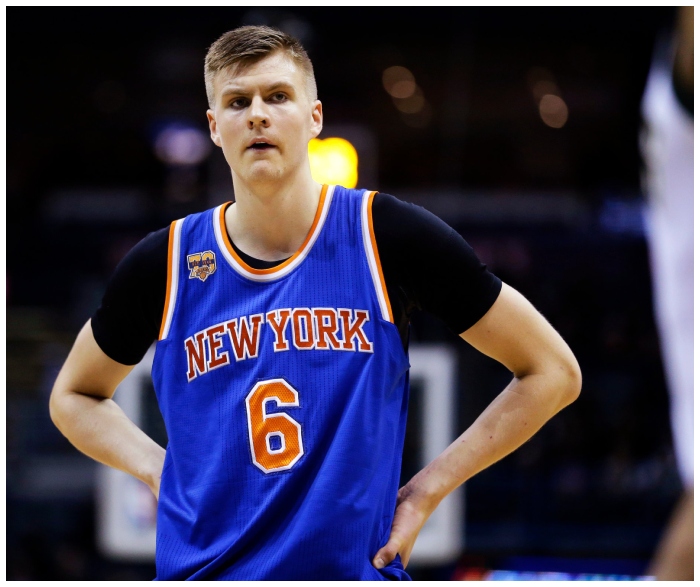
The fact that he forced his way out of New York only deepens their disappointment and frustration. Now, whenever Porzingis takes to the court against the Knicks, he is met with a chorus of boos, starkly contrasting the cheers that once welcomed his play. In the Knicks’ narrative, Kristaps Porzingis is a figure of immense talent and potential but also a symbol of the heartbreak that can come when a player chooses to part ways with a team.
6. The Fab Five
Ranked fourth in the list of Most-Hated Figures in US College Basketball History is The Fab Five of Michigan. The group, composed of Chris Weber, Jalen Rose, Juwan Howard, Jimmy King, and Ray Jackson, was once considered a force to be reckoned with in the sport.

However, their celebrated recruitment to the Michigan basketball team eventually led to their tarnished legacy. They were found to have violated NCAA rules and were involved in a scandal. The team’s star player, Chris Weber, even faced charges including obstruction of justice and lying to a federal grand jury. The recent ESPN film/documentary, “The Fab Five,” did little to repair their public image.
5. Kyrie Irving
Kyrie Irving is a figure known for his involvement in controversy. The animosity towards Irving can be traced back to his decision to leave the Cavaliers, expressing his desire to play second fiddle to LeBron James no longer. Following his exit, Irving’s time with the Boston Celtics was far from successful, as the team seemed to perform better without him on the court. His visits to Boston have incited numerous conflicts, from his attempts to purify the court with sage to disrespectfully treating the Celtics’ mascot, Lucky, at half-court, which led a fan to throw a water bottle as he exited towards the locker room.
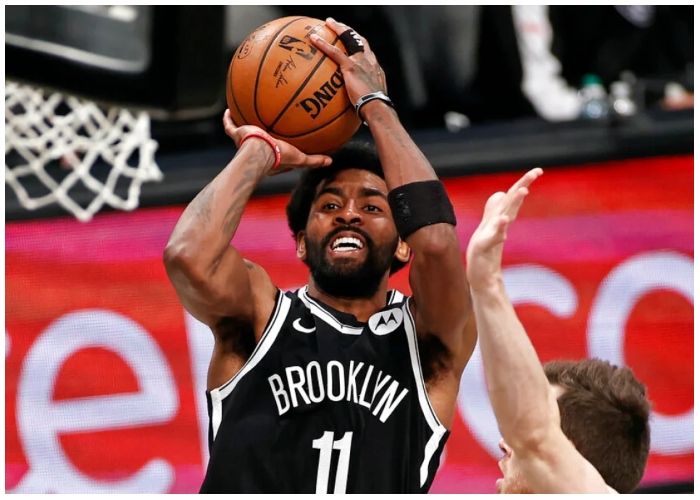
Irving is no stranger to controversy outside the basketball court, either. While everyone is entitled to their beliefs and free to choose based on them, public figures face greater scrutiny and consequences. This season, Irving faced suspension from the Nets for sharing a link to a documentary perceived as anti-Semitic. This incident followed a year in which he was repeatedly absent from the Nets for unspecified reasons and had disagreements with Coach Steve Nash. Despite being an exceptionally skilled basketball player, Irving tends to draw unwarranted attention, which can be a challenge for any team.
4. Bob Knight
Bob Knight is one of the most successful coaches in college basketball history. He coached at Indiana from 1971 to 2000 and led his teams to three NCAA and 11 Big Ten Conference championships. Knight received the National Coach of the Year honor four times and the Big Ten Coach of the Year honor six times. Before starting the 2011-12 season, he had won more D-1 college basketball games than any other head coach.

However, Knight was also a controversial figure. Despite his impressive track record, his overbearing personality and domineering manner rubbed many people incorrectly. He was known for his outbursts on and off the court, including throwing a chair across the court during a game in 1985. These incidents led to his firing from Indiana in 2000. Knight finished off his career by coaching at Texas Tech for seven seasons.
3. Christian Laettner
Christian Laettner from Duke University is ranked second in our list of the most hated figures in US college basketball history. Although a phenomenal player, Laettner was despised by many opposing fans. He started in four Final Fours, a record no one else has achieved. At Duke, he helped his team win two NCAA championships and was named the Most Outstanding Player in the 1991 Final Four.

In 1992, he received several national Player of the Year awards. However, his immense talent did not stop fans from disliking him. Laettner was from upstate New York, and opposing fans would often express their loathing for him during games. Many still despise him; you can even purchase an “I Still Hate Laettner” t-shirt online.
2. Dwight Howard
Howard’s strained relationship with then-head coach Stan Van Gundy created significant turmoil within the organization. The situation escalated to such an extent that it resulted in Van Gundy’s firing and Howard’s eventual departure to the Los Angeles Lakers, causing a seismic shift in the team’s plans. The post-Howard era has been a challenging time for the Magic, with the team struggling to regain its relevance in the league.
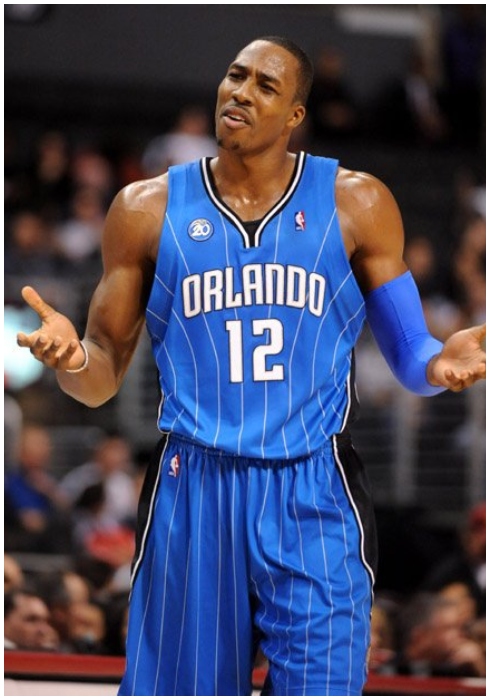
Many fans can’t help but wonder if things could have been different had Howard demonstrated more maturity and focus during his time in Orlando. Whenever Howard returns to the Magic’s home court, he is met with mixed reactions, a testament to his complicated history with the team. Despite his contributions to the franchise, the way his tenure ended has left a sour taste in many fans’ mouths.
1. Dave Bliss
Dave Bliss, the former head coach at Baylor, is considered the most hated figure in college basketball history. Bliss began his coaching career as an assistant coach at Army under Bob Knight. He had a good record (525-328) as a head coach at Oklahoma, SMU, New Mexico, and Baylor. However, his career took a turn for the worse when he was involved in providing improper benefits to players at SMU. At Baylor, Bliss was aware of rampant drug abuse among his team but failed to report the failed drug tests.

The worst part was Bliss’s alleged attempt to frame a murdered Baylor player as a drug dealer to protect himself. While other players on this list were disliked for their performance or attitudes, Bliss’s actions have earned him a place in college basketball history as one of the most despicable figures.
From NCAA Superstars to NBA Flops: College Basketball’s Biggest Disappointments
32. Drew Gooden: Drew Gooden was a force to be reckoned with during his time at Kansas, leading the nation in rebounding and helping the Jayhawks win their first conference title in years. His impressive college career earned him the fourth overall pick in the 2002 NBA Draft, where he quickly made an impact as an All-Rookie first-teamer.
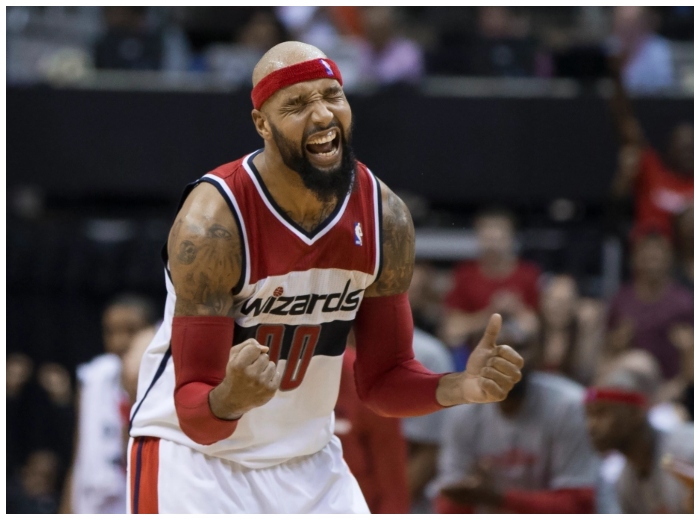
However, Gooden’s journey in the NBA was rocky, with multiple trades and team changes preventing him from finding a permanent home. While he enjoyed a solid 14-year career, Gooden never reached the stardom expected of him after his standout college years. Despite falling short of expectations, Gooden’s journey from college superstar to NBA journeyman is a testament to his resilience and determination.
31. Jason Williams
Jason Williams, known for his flashy plays and impressive stats in college, was poised for greatness in the NBA. However, multiple off-court incidents, including a drug suspension, saw him struggle to live up to the hype. Williams couldn’t shake his personal issues despite earning the nickname “White Chocolate” and showing flashes of brilliance on the court.

He bounced around to multiple teams and was involved in a verbal altercation with a columnist, leading to another trade. Williams’ career ended with solid but unspectacular performances, leaving fans to wonder what could have been had he been able to keep his personal life in check.
30. Ben McLemore
Ben McLemore’s time at Kansas was nothing short of impressive. He burst onto the scene as a redshirt freshman, earning Second-Team All-American honors. He cemented himself as a surefire lottery pick in the 2013 NBA Draft. However, his transition to the NBA was not smooth sailing. Despite showing glimpses of potential, he never reached the stardom expected of him.
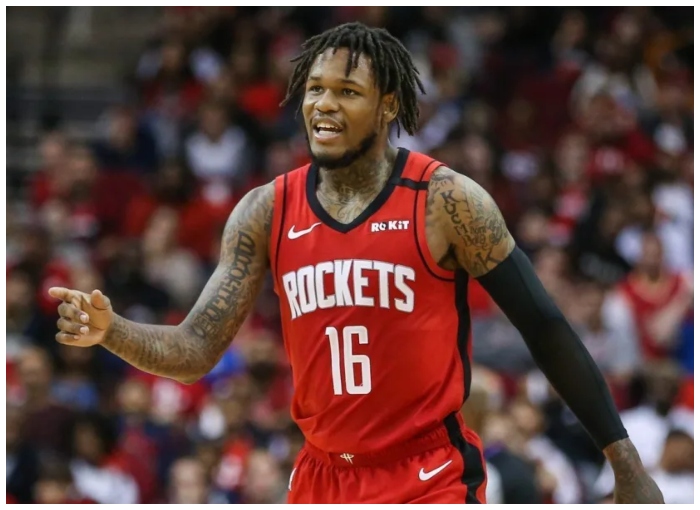
After four underwhelming seasons with the Sacramento Kings, McLemore’s career took a turn as he became a journeyman, bouncing around the league in search of a stable role. McLemore may still play in the NBA, but his career pales compared to his dominant college performance.
29. Wesley Johnson
After being named the Big East Player of the Year and leading Syracuse to a top seed in the NCAA Tournament, Wesley Johnson had high hopes going into the NBA Draft. Johnson was selected fourth overall by the Minnesota Timberwolves and is expected to become a star in the league. Unfortunately, his career never quite lived up to expectations.
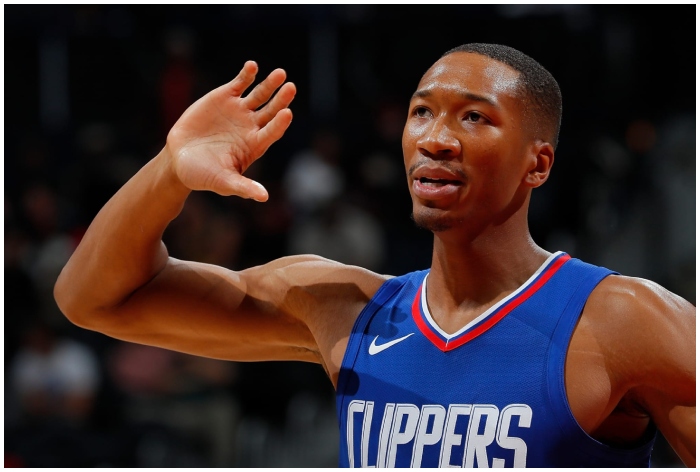
Despite starting for two seasons in Minnesota, Johnson never reached the same level of success that he had at Syracuse, and he struggled to make an impact as he bounced around the NBA over the next decade. The Timberwolves also missed out on drafting several future All-Stars, disappointing Johnson’s NBA career.
28. Robert Traylor
Robert Traylor was one of the most promising stars of Michigan basketball after the Fab Five era. Still, his NBA career never took off as expected. Despite being selected sixth overall in the 1998 NBA Draft, Traylor never averaged more than 5.7 points per game in his seven years in the league.

A knee injury and struggles with weight also contributed to his downfall. Sadly, Traylor’s career overseas was cut short when he passed away at 34 due to a heart attack. His story is a tragic reminder of what could have been for a player with so much potential.
27. Michael Beasley
After his brief stint in China, Beasley tried to revive his NBA career, signing with the Los Angeles Lakers in 2018. However, he only played in 26 games for the Lakers and was waived by the team after the season.
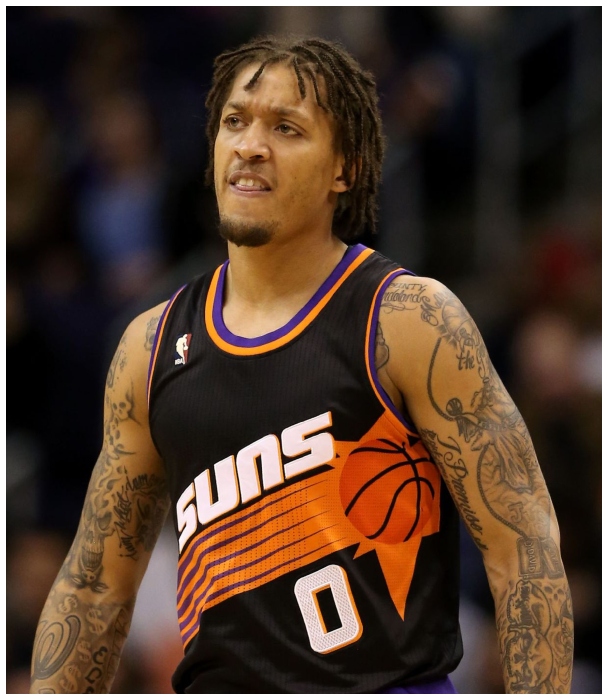
Despite flashes of brilliance on the court, Beasley’s career has been marred by off-court issues and a lack of consistency. He remains a free agent to this day, and at 32 years old, it’s uncertain if he’ll get another chance to prove himself in the NBA.
26. O.J. Mayo
O.J. Mayo was one of his generation’s most highly-touted college basketball players. Still, his NBA career didn’t quite live up to expectations. As a freshman at USC, Mayo was a dominant force, averaging 20.6 points per game and leading the Trojans to the NCAA Tournament. Mayo’s success continued in the NBA, where he started for the Memphis Grizzlies and averaged 18.5 points per game as a rookie.
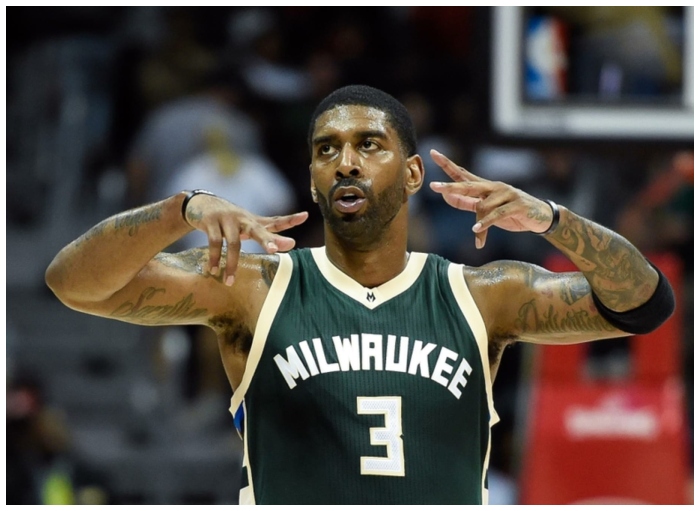
However, Mayo’s career faltered after being demoted to a bench role in 2011. Injuries, a drug violation, and declining production plagued the rest of his NBA career, and he eventually found himself playing overseas. While Mayo had a productive career, his NBA legacy will always be overshadowed by what could have been.
25. Nik Stauskas
Nik Stauskas was a college basketball standout at Michigan, winning the Big Ten Player of the Year award as a sophomore with his incredible three-point shooting skills. Stauskas was drafted eighth overall in 2014 by the Sacramento Kings, but his success was short-lived. After just one year, the Kings traded him to Philadelphia, where he became a part of “The Process” but never found his footing.

Stauskas continued to move around the league and eventually played overseas, failing to live up to his potential. His story is a reminder that even the most promising prospects can struggle to adapt to the NBA’s intense competition and unique challenges.
24. Jahlil Okafor
Jahlil Okafor, a dominant center for Duke’s national championship team, is a cautionary tale of a college star who couldn’t translate his success to the NBA. Okafor earned ACC’s Player of the Year Award and First-Team All-American status, averaging 17.3 points per game and 8.5 rebounds per night.
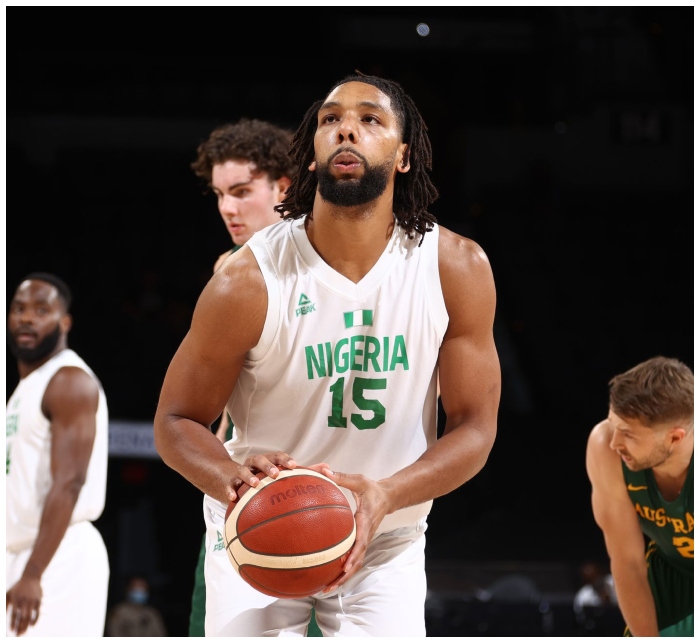
Despite being the third overall pick in the 2015 NBA Draft, Okafor quickly fell out of favor with the Philadelphia 76ers, who already had a much more complete center prospect in Joel Embiid. Okafor’s classic back-to-the-basket playing style didn’t suit the modern NBA era, where centers are expected to shoot threes and defend all over the court. Although Okafor had a solid rookie year in Philadelphia, he slid out of the rotation. He struggled to find his place in the league.
23. Jabari Parker
Jabari Parker was one of the country’s most highly-touted high school basketball players when he committed to Duke. He lived up to the hype, helping lead the Blue Devils to the Elite Eight in his freshman season and earning First-Team All-American honors in his sophomore year. After his second season, Parker declared for the 2014 NBA Draft and was selected as the second overall pick by the Milwaukee Bucks.
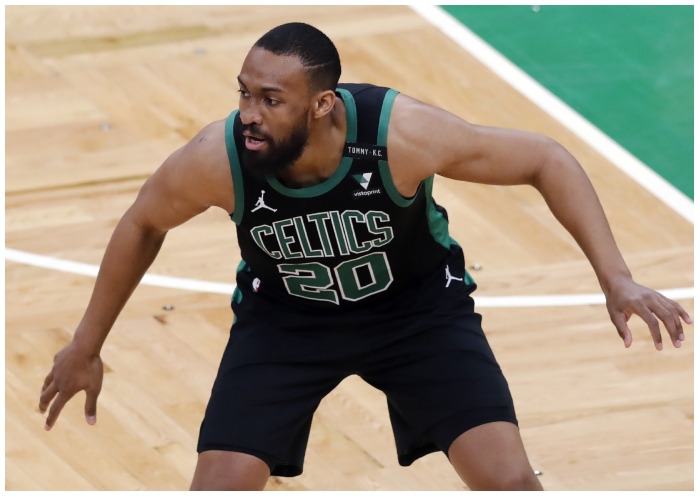
Parker showed flashes of brilliance in his first few years in the league. Still, he was hampered by injuries that limited his playing time and effectiveness on the court. He suffered two torn ACLs in his first four seasons with the Bucks, and he was traded to the Washington Wizards midway through the 2018-19 season. Since then, Parker has bounced around the league, playing for several teams in a reserve role. He has never lived up to the promise he showed at Duke, and his career has been derailed by injuries. However, he is still a talented player who has the potential to contribute to a team if he can stay healthy.
22. Rashad McCants
Rashad McCants’ time at North Carolina was also marred by controversy. In 2014, McCants claimed that he had taken fake classes and was steered toward no-show courses to remain eligible to play basketball. He also alleged that he and his teammates were poorly educated in North Carolina.
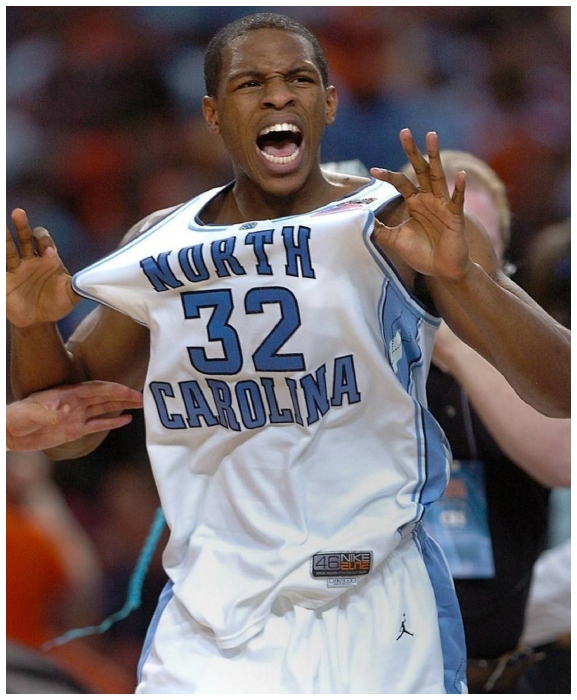
These allegations led to an investigation by the NCAA. They resulted in North Carolina being put on probation and losing scholarships. McCants has also been critical of his time in the NBA, saying that he was not given a fair chance to succeed and that he was blackballed by the league for his outspokenness on social and political issues.
21. Mateen Cleaves
Mateen Cleaves’ basketball career did not stop in the NBA, as he continued to play professionally in Europe after his stint with the Pistons. Cleaves played in various leagues, including Spain, Greece, and Israel. He also briefly played in the NBA Development League (now known as the G League) and appeared in the BIG3 league.
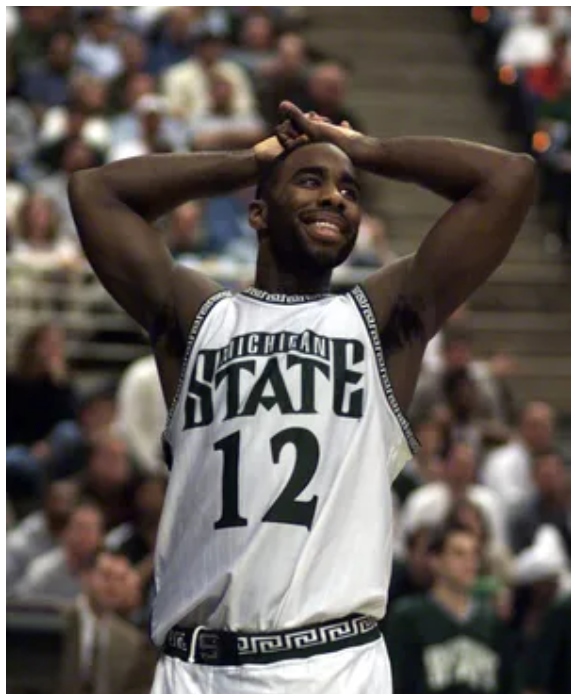
Off the court, Cleaves has been involved in various charitable organizations and community efforts, particularly in his hometown of Flint, Michigan. He has also worked as a college basketball analyst for multiple networks, including ESPN. In recent years, Cleaves has made headlines for his involvement in a high-profile sexual assault case, in which he was acquitted of all charges.
20. Thomas Robinson
Thomas Robinson’s time in the NBA was marked by multiple trades, inconsistent playing time, and underwhelming performances. He played for five teams in five seasons and never seemed to find a good fit. While he did have a few impressive games and flashes of potential, he could never establish himself as a consistent contributor in the league.
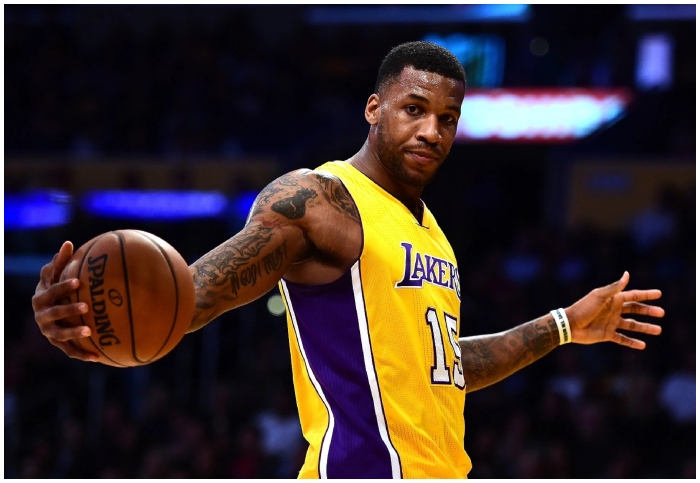
Off the court, Robinson faced personal tragedy and adversity that likely impacted his NBA career. In addition to the loss of his family members, while he was in college, he also dealt with the death of his younger brother in 2018. Despite these challenges, Robinson has continued to play professionally overseas and in various minor leagues, demonstrating his resilience and dedication to the game.
19. Tyrus Thomas
Tyrus Thomas was a one-and-done star for LSU, who had a tremendous freshman year, earning him SEC Freshman of the Year and Co-Defensive Player of the Year honors. He led the Tigers to the Final Four and decided to turn pro after just one year. He was drafted fourth overall by the Portland Trail Blazers in the 2006 NBA Draft. Still, he was traded to the Chicago Bulls for LaMarcus Aldridge.
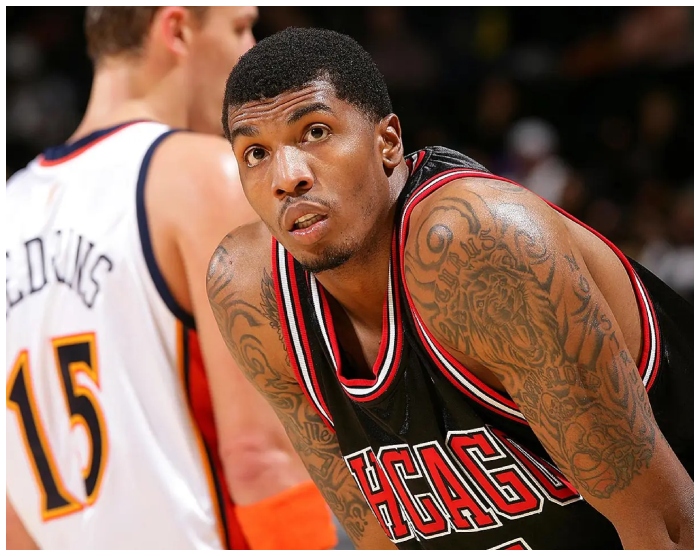
Thomas became a starter in his third season and showed potential, setting career highs in points, rebounds, and blocks. However, he suffered a fractured forearm in his fourth season and could never regain his form. Thomas bounced around the league, playing for Charlotte and Memphis, before washing out of the NBA in 2015. His career ended disappointingly, failing to live up to the promise he showed in college.
18. Michael Kidd-Gilchrist
Michael Kidd-Gilchrist was known for his incredible length and athleticism at the University of Kentucky, making him a prime candidate to be a dominant wing in the modern NBA. However, all of the potential that Kidd-Gilchrist flashed in college never really translated to the pros on the offensive end. Kidd-Gilchrist was never able to develop as a jump shooter, limiting his offensive ability and making it hard for Charlotte to build threatening lineups when Kidd-Gilchrist could be effectively ignored by opposing defenses.
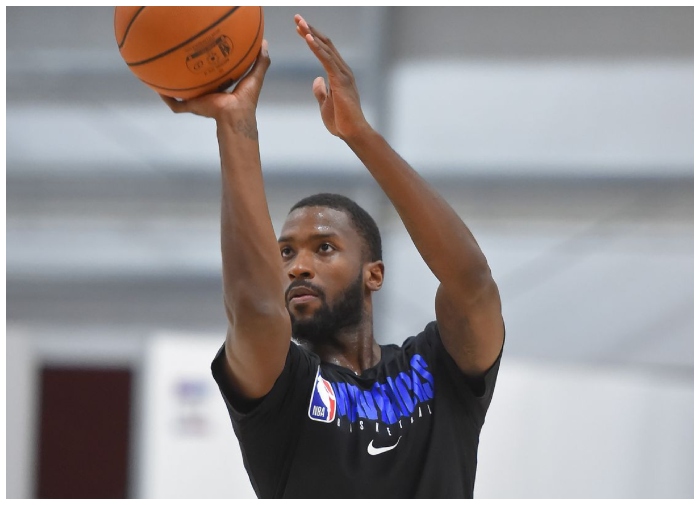
The Hornets gave Kidd-Gilchrist plenty of chances to succeed before phasing him out of their lineup towards the end of the decade. Kidd-Gilchrist is out of the league after being waived by the New York Knicks last fall. However, even if he resurfaces, it will likely be as a rotational player, not the superstar Charlotte thought they were getting in the draft.
17. Raef LaFrentz
Raef LaFrentz had a successful career as a big man for the Kansas Jayhawks in the late 1990s, teaming up with future NBA legend Paul Pierce to lead the team. LaFrentz was named the Big 12’s Player of the Year in 1997 and 1998 and earned first-team All-American status in multiple years.
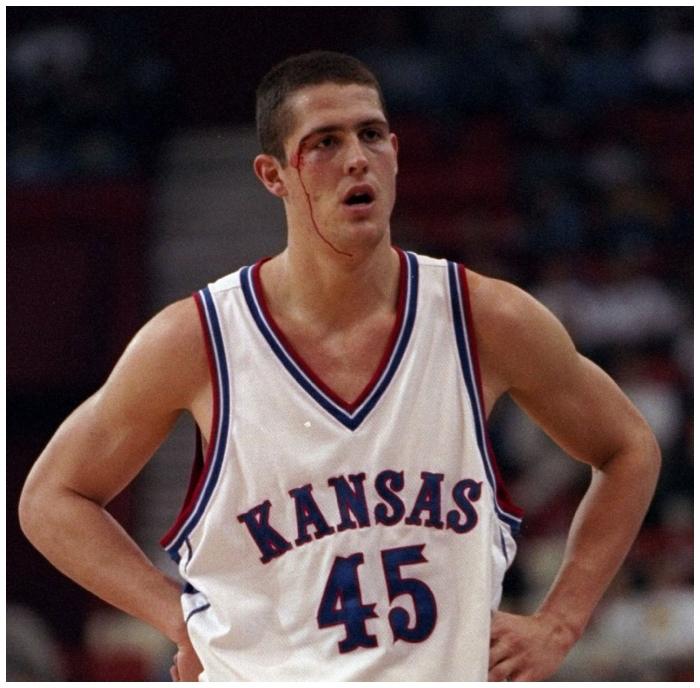
He was taken with the third overall pick in the 1998 NBA Draft by the Denver Nuggets and developed into a solid starting center. However, LaFrentz’s skill set didn’t translate well to his era, dominated by traditional back-to-the-basket bigs like Shaquille O’Neal and Tim Duncan. Despite this, he played in the NBA for 11 years before retiring in 2009.
16. Jonny Flynn
Jonny Flynn was a talented guard who played for two seasons at Syracuse University before entering the NBA in 2009. As a freshman, he was named Big East Rookie of the Year after averaging 15.7 points and 5.3 assists per game. In his sophomore year, he led Syracuse to the Sweet 16 and earned All-Big East First Team honors. Flynn was selected with the sixth overall pick by the Minnesota Timberwolves in the 2009 NBA Draft. He had a promising rookie season, averaging 13.5 points and 4.4 assists per game.
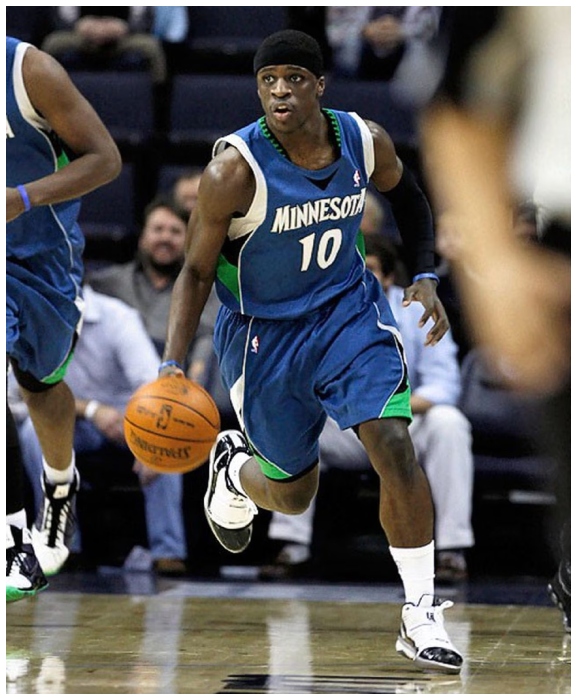
However, after undergoing off-season hip surgery, Flynn’s performance declined significantly. He struggled with injuries and was out of the league by 2013. Flynn’s NBA career was especially disappointing because he was taken just one pick ahead of Stephen Curry, who became a superstar and multiple-time NBA champion with the Golden State Warriors.
15. Corey Brewer
Corey Brewer was a key player in the Florida Gators’ back-to-back NCAA championships in 2006 and 2007. After winning the Most Outstanding Player award at the 2007 Final Four, Brewer was selected as the seventh overall pick in the NBA draft by the Minnesota Timberwolves. The dynamic defender was an intriguing prospect with his length and athleticism. Still, his inconsistent offensive performance kept him from reaching full-time starter status.
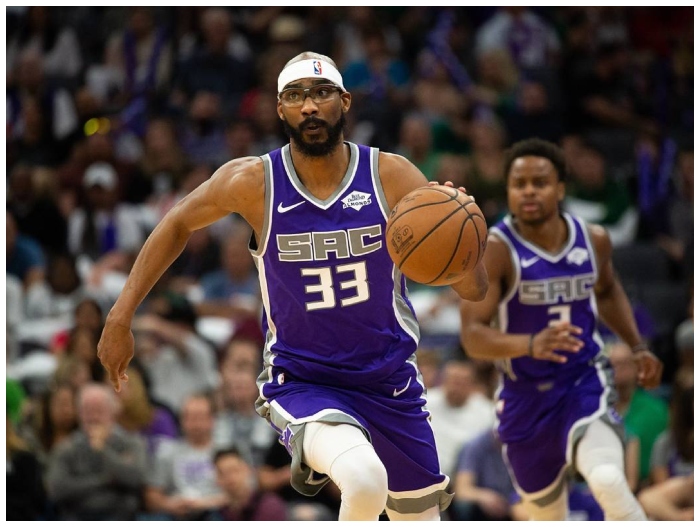
Despite being a valuable role player, Brewer failed to meet the high expectations set for him after his college success. Throughout his career, he played for eight teams and helped the Dallas Mavericks won an NBA championship in 2011. Although Brewer showed flashes of brilliance, he never reached the superstar status many predicted for him after his outstanding college career.
14. Sean May
Sean May was a key figure in Roy Williams’ great North Carolina squad and an All-American junior. May play a significant role in the Tar Heels’ victory against a strong Illinois squad in the national championship game, scoring 26 points on 10-of-11 shooting and grabbing 10 rebounds on his way to being named the Most Outstanding Player of the Final Four.
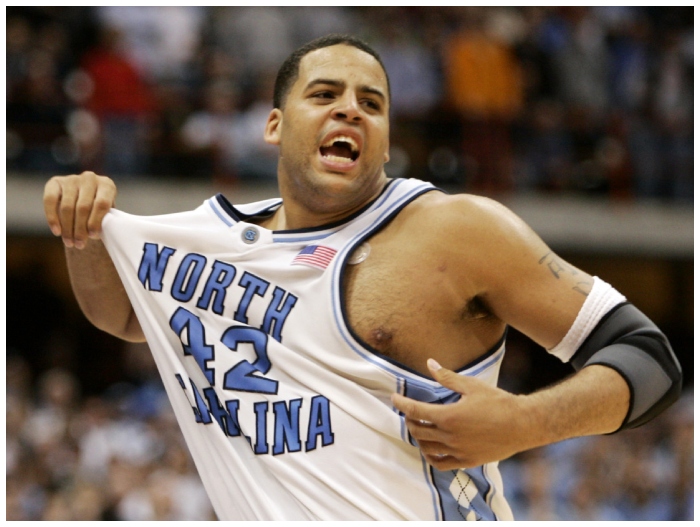
The Charlotte Bobcats took May with the 13th overall pick in the 2005 NBA Draft, where he was expected to make it big in the pros. However, his NBA career was riddled with injuries, including a microfracture surgery that cost him the entire 2007-08 season. May struggle with conditioning and was out of the NBA by 2010. He did play for a few years overseas before returning to his alma mater as the director of basketball operations for the Tar Heels. Despite his success in college, May could not significantly impact the NBA, leaving many to wonder what injuries could have been if injuries hadn’t derailed his career.
13. Marvin Williams
Marvin Williams made a name for himself as a freshman during North Carolina’s championship run in 2005. The 6-foot-8 wing was an athletic force off the bench named the ACC’s Rookie of the Year. Scouts were impressed with his raw talent and shooting ability from beyond the arc. The Atlanta Hawks drafted Williams with the second overall pick in the 2005 draft, placing immense pressure on the 19-year-old to become a superstar.
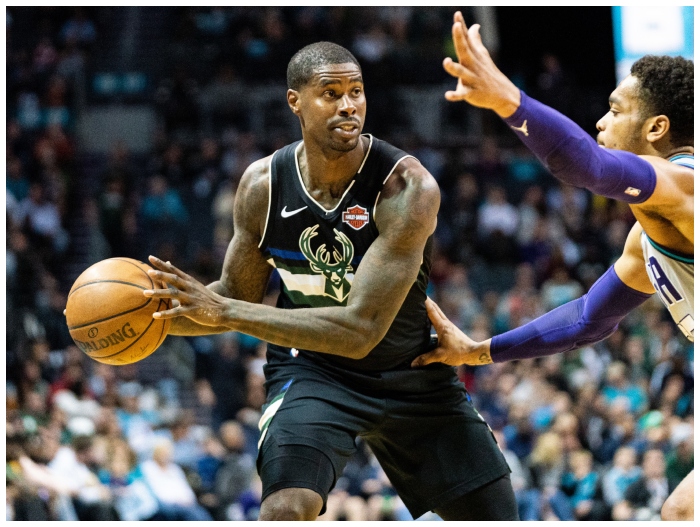
Despite developing into a steady starter for the Hawks, Williams never lived up to his potential as an All-Star player. After the 2012 season, he was traded to the Utah Jazz for Devin Harris. Williams played in the NBA for another eight years before retiring after the 2020 season as a member of the Milwaukee Bucks. Although he had a 15-year pro career, Williams never fully met the high expectations set for him after his impressive freshman season.
12. Bobby Hurley
Bobby Hurley was a star point guard for Duke and helped lead the Blue Devils to three Final Fours, taking home Most Outstanding Player honors at the 1992 Final Four. He became an intriguing prospect in the 1993 NBA Draft. He was taken with the seventh overall pick by the Sacramento Kings. However, a car accident during his rookie season significantly impacted Hurley’s career, where he sustained life-threatening injuries.

While he was able to recover and return to the NBA, his career was never the same. Hurley played for several teams during his NBA career but could never live up to his potential as a college star. After retiring from playing, he succeeded as a head coach, first at Buffalo and then at Arizona State. Despite his success on the sidelines, many still wonder what could have been for Hurley as a player had he not suffered that fateful accident.
11. Hasheem Thabeet
Hasheem Thabeet was projected to become a superstar with the potential to be a dominant defensive presence on the court. Thabeet began his basketball career late but became a key player for the UConn Huskies. During his time with the Huskies, Thabeet won two Big East Defensive Player of the Year awards and was named Co-Player of the Year in 2009.
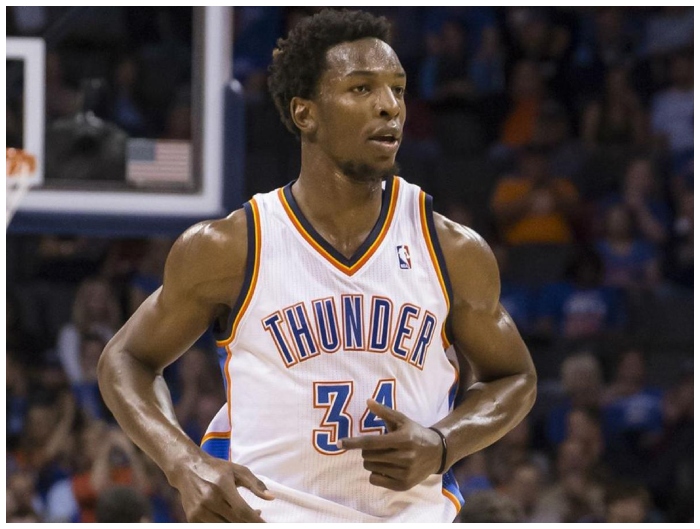
The Memphis Grizzlies selected Thabeet with the second overall pick in the 2009 NBA Draft, banking on his potential as a defensive force. However, Thabeet’s lack of development in his offensive game made him a non-threat on that end of the floor and limited his playing time. After his time in the NBA, Thabeet played in the G-League and international leagues. His story warns about entering the NBA before being ready. It reminds us of the risks of passing on more established prospects, such as James Harden and Stephen Curry, who were selected after Thabeet in the same draft.
Kevin Durant
Nearly eight years have passed, yet Kevin Durant remains the NBA’s most vilified player. Before the pivotal moment when he opted to leave Oklahoma City for the Golden State Warriors, Durant was adored by many as he established himself as one of the greatest scorers in NBA history. However, his decision to join the Warriors replaced that adoration with an intense, relentless fury that persists today.
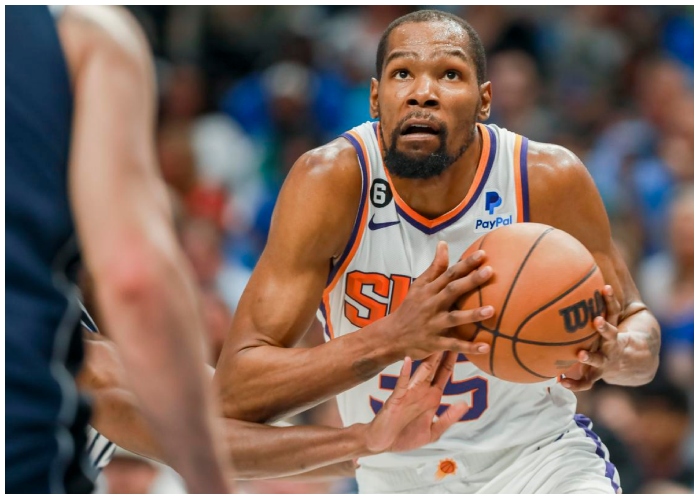
In fairness, Kevin Durant merely accepted an offer from the Golden State Warriors, something any player in his position might have done. The contentious aspect was that the Warriors had just eliminated Durant’s Thunder in the previous season’s playoffs. Stephen A. Smith even claimed it was the least assertive move he had ever seen from a superstar. Many fans maintain that Durant’s two championships with the Warriors carry little weight, despite witnessing the same NBA Finals victories in which Durant clearly shined. The animosity has escalated to a fever pitch, and it’s time for it to subside, especially since Durant is now playing in a different city.
10. Greg Oden
Greg Oden was a dominant force in college basketball, and his success led him to become the first overall pick in the 2007 NBA Draft. However, Oden’s career quickly spiraled downwards due to injuries. A microfracture surgery in his right knee ended his rookie season before he could play a game. He suffered from several more knee injuries that destroyed his athletic ability. Oden only played a combined 105 games over seven years in the NBA, forcing him out of the league entirely.
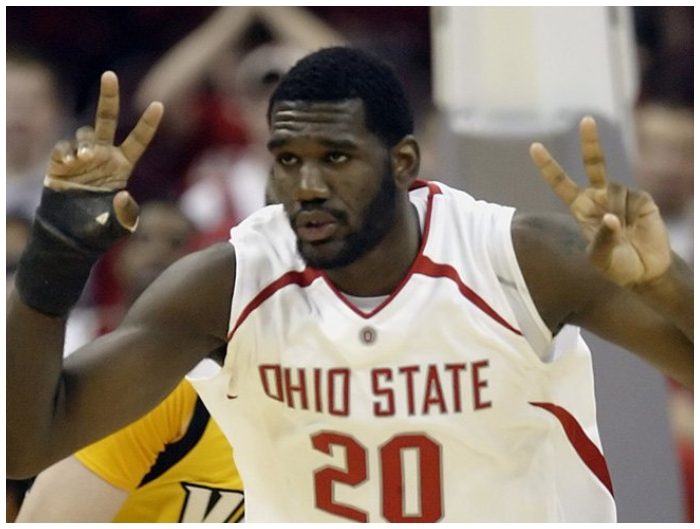
Oden’s tragic story becomes even more painful for Portland as they passed on Kevin Durant to take Oden with the top pick. While no one could have predicted the extent of Oden’s injuries, this remains a cautionary tale about the risks associated with selecting a prospect based on their college success.
9. Tyler Hansbrough
Tyler Hansbrough was a force to be reckoned with during his four seasons at North Carolina. The consensus first-team All-American averaged over 18 points and nearly 8 rebounds per game, finishing his college career with over 2,800 points and 1,200 boards. Dubbed “Psycho T” for his intense style of play, he was a master at getting to the free-throw line and out-muscling opponents.
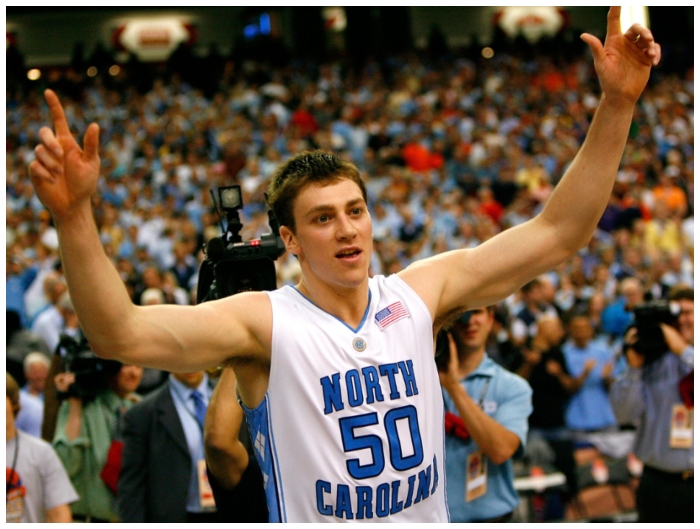
However, questions arose about whether his aggressive style of play would work in the NBA. Hansbrough lacked a solid perimeter game and played like a power forward trying to play center. He wasn’t taken in the lottery, and despite playing in over 400 NBA games, he never found much of a role in the league. Hansbrough plays in China, but it has been over four years since his last NBA game. While he was a dominant force in college, his NBA career was lackluster.
8. Shelden Williams
Shelden Williams may not have lived up to his potential in the NBA. Still, there’s no denying his dominant two-year run as Duke’s upperclassman big man. Williams was integral to Duke’s success during his four years in Durham, contributing to the team’s 116 wins and earning a No. 1 seed in the NCAA tournament in each of his final three years on the roster.

Williams’ senior year was awe-inspiring. He became the only player since 1997 to average at least 18 points, 10 rebounds, and 3 blocks per game in a single season. However, his NBA career was far from triumphant. He struggled to adjust to the league’s defensive rules and failed to live up to his potential. Despite his lackluster NBA career, Williams’ dominance in college basketball during his senior year cannot be ignored. While he may not have been the first player to come to mind when reflecting on college basketball in the 2000s, he certainly made his mark at Duke.
7. Joe Holup
Joe Holup is a George Washington legend who put the school in the national spotlight in the early 1950s. As a freshman, Holup averaged an impressive 19.4 points and 18 rebounds per game, and by his senior year, those numbers had grown to 25 points and 23.2 rebounds per game. His college career totals were equally impressive, with 2,226 points and 2,030 rebounds.
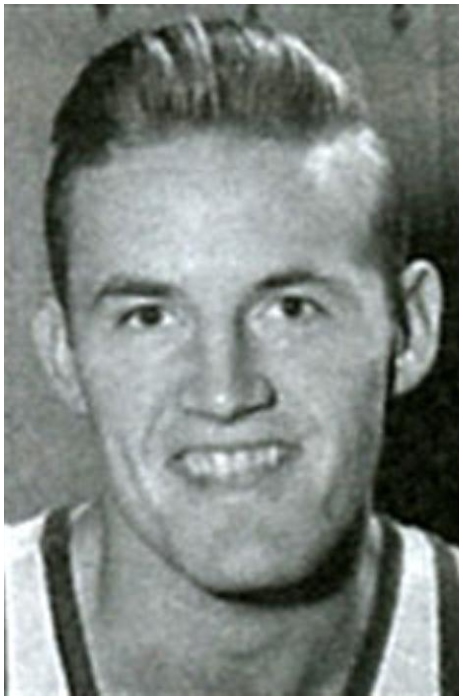
Despite his college dominance, Holup struggled to find success in the NBA. At 6’6″, he was undersized for a small forward. He struggled against larger opponents like Bill Russell, Bob Pettit, and Clyde Lovellette. Holup only lasted three seasons in the NBA, averaging just 64 games per year. Surprisingly, a player as dominant as Holup in college couldn’t make an impact in the pros. Still, he remains a George Washington legend to this day.
6. Shawn Respert
Shawn Respert was a dominant force for Michigan State before being diagnosed with stomach cancer during his rookie season in the NBA. He kept his diagnosis a secret and returned the following season. He battled injuries and struggled to find his footing in the league. Despite his NBA struggles, Respert remains a Michigan State legend. He averaged over 20 points per game as a sophomore, over 24 points per game as a junior, and over 25 points per game as a senior.
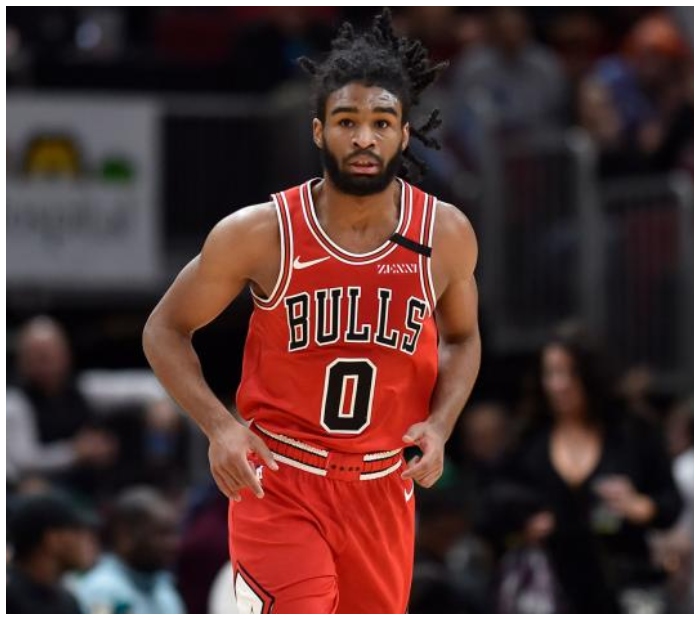
He helped carry a subpar roster to a No. 3 seed in the NCAA tournament. Unfortunately, they lost to Weber State. Respert scored over 2,500 points during his college career, nearly triple the amount he scored in the NBA. While it’s possible that Respert could have developed further in the NBA had he not been diagnosed with cancer, we’ll never know. We know he was a dominant force in college basketball and impacted Michigan State basketball.
5. Steve Alford
Steve Alford was among the most skilled shooters in college basketball history, leading Indiana to a national championship in 1987. He finished his college career with an impressive 2,438 points, making 107 three-pointers and shooting 53% from beyond the arc in his senior year alone. Alford’s shooting prowess was on full display during the NCAA tournament. He shot an incredible 61.8% from downtown, including a 7-of-10 effort in the championship game against Syracuse.
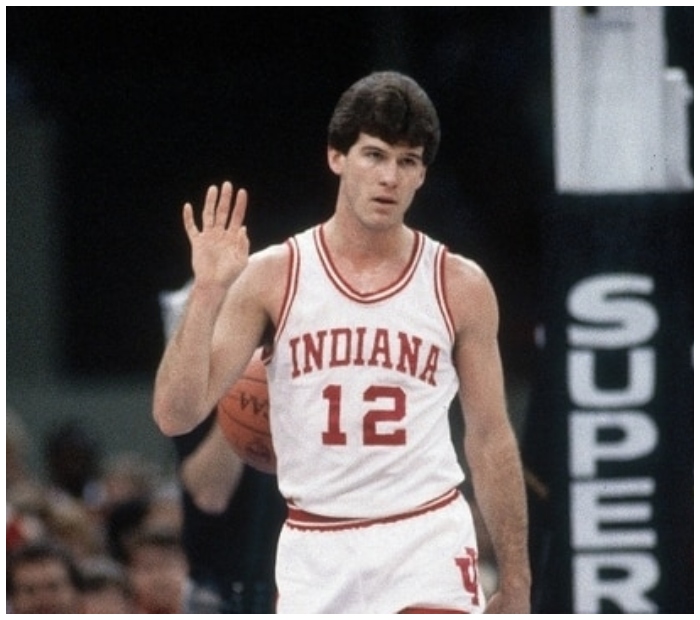
Despite his college success, Alford struggled to find his footing in the NBA. He wasn’t even a first-round pick and shot 32.4% from beyond the arc during his time in the league. While he did have a brief stint with the Golden State Warriors as a rotation player, he was quickly out of the league within four years. Alford’s NBA career may not have lived up to his college success, but his shooting abilities were undeniable. Had he translated his college success to the pros, he could have been a force to be reckoned with in the league.
4. Jimmer Fredette
Jimmer Fredette was a scoring machine during his four years at BYU, averaging an incredible 28.9 points per game during his senior year. He became known for his ability to make jumpers from beyond 30 feet, earning the nickname “Jimmer Range.” Despite his college success, Fredette struggled to find a place in the modern NBA. While players like Trae Young, Luka Doncic, Damian Lillard, and James Harden can shoot from deep and contribute in other ways, Fredette could not pass, drive, rebound, or play defense at an NBA level. He also struggled to get into a shooting rhythm due to playing fewer minutes and not having a permanent green light like in college.
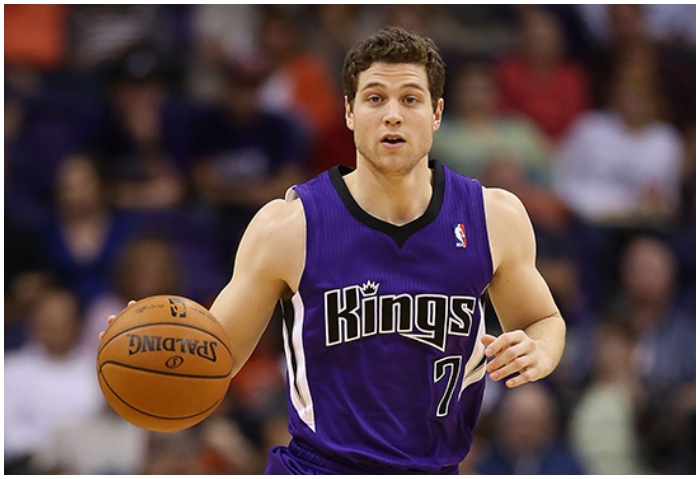
Although Fredette had a few moments of “Jimmer Mania” during his NBA career, he only started seven games and struggled to make a significant impact. He found success playing for the Shanghai Sharks in China, where he averaged an impressive 37 points per game during his three seasons there. While Fredette may not have panned out in the NBA, he remains one of the most exciting scorers in college basketball history.
3. Ed O’Bannon
Ed O’Bannon led UCLA to a national championship in the mid-’90s, putting up an impressive 30 points and 17 rebounds in the title game against Arkansas. He was named Most Outstanding Player for his efforts, but his success in college didn’t translate to the NBA. O’Bannon struggled to find a role in the league. He wasn’t big enough to play in the post or quick enough to live on the perimeter.
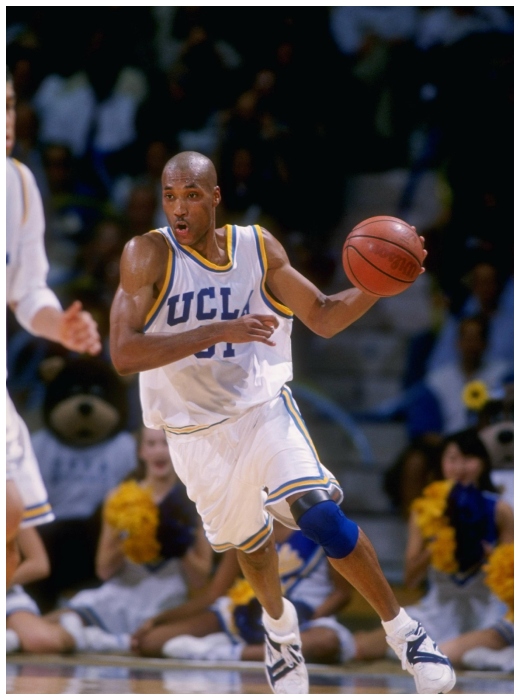
In today’s game, he might have thrived as a 6’8″ three-and-D wing, but that role didn’t exist back then outside of Scottie Pippen. While O’Bannon’s NBA career was short-lived, he remains an important figure in college basketball history. These days, he’s known for leading the charge against the NCAA’s refusal to allow players to profit off their name, image, and likeness. His impact on college basketball will always be remembered, even if his NBA career was relatively forgettable.
Trae Young
Trae Young deserves a special mention on this list, mainly due to the intense animosity he faces from New York City. Entering the NBA, Young was primarily recognized as the player who was swapped for Luka Doncic and possessed Stephen Curry-like prowess in shooting on the court. Over the past three seasons, Young has proven himself to be one of the finest point guards in basketball and is showcasing the same skill level, to some extent, in the 23 seasons.

However, New Yorkers’ antipathy towards Trae Young is so profound and anger-driven that it warrants a mention. As a New Yorker, I am well aware that my hometown folks would have been upset if Young hadn’t been brought up. Moreover, the wave of dislike for Young is not limited to New York; other fan bases are also joining the ranks of the Trae Young detractors. Incidents such as Young taking a private flight home after his team was eliminated from the playoffs in 2022 and his interactions with home crowds have rubbed many the wrong way. Young’s ranking on this list may climb by the end of his career, but for now, he’s just outside the main list.
2. Bo Kimble
Bo Kimble and Hank Gathers were dominant during their time at Loyola Marymount. They transferred to LMU after starting their careers at USC, and under head coach Paul Westhead, the Lions went from 12-16 to 28-4 in their first season with the duo on the court. After Gathers tragically died during the 1990 WCC tournament, Kimble nearly led LMU to the Final Four, averaging 35.8 points in four tournament games. He had already been putting up incredible numbers, averaging 35.3 points per game in the 1989-90 season.
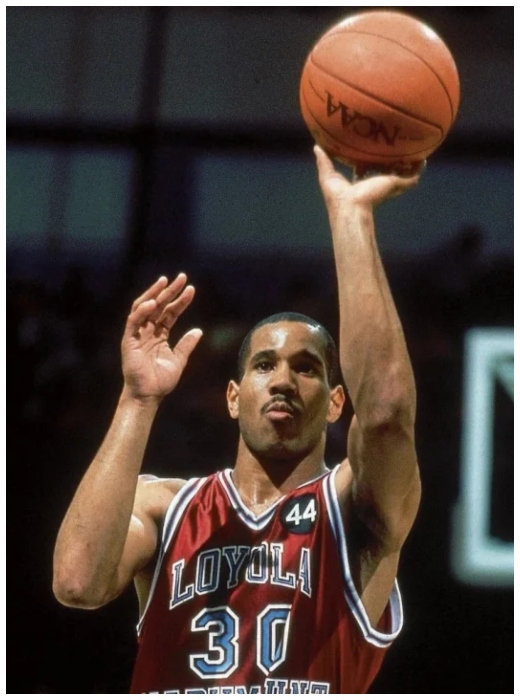
Kimble started strong in the NBA, scoring double-figures during his first 15 games. However, he quickly fell off and only averaged 3.9 points per game for his injury-plagued career. Kimble was expected to have a much more successful NBA career after his college dominance. He remains an important figure in college basketball history, particularly for his impressive performances after the tragedy of Gathers.
1. Adam Morrison
Adam Morrison is known for his iconic mustache, his tearful reaction after Gonzaga’s loss in the 2006 Sweet 16, and his failure to live up to expectations in the NBA. However, he was a dominant force in college basketball during the 2005-06 season. Morrison battled Duke’s JJ Redick for National Player of the Year honors that year and came out on top, averaging 28.1 points per game and winning the Wooden Award. He had several incredible performances, including a 43-point game against Michigan State in the Maui Invitational and another 43-point effort against Washington.
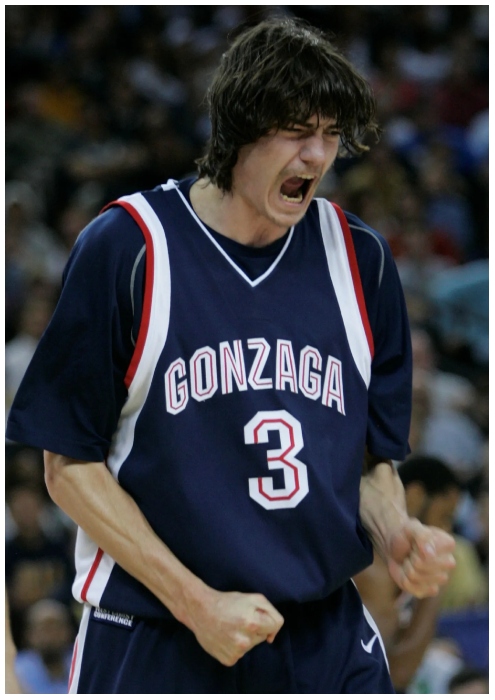
Despite his college success, Morrison struggled in the NBA. He had an okay rookie season, averaging 11.8 points per game, but his poor defense led to him being in and out of the starting lineup. He tore his ACL the following season and never regained his college form. Morrison did win an NBA championship with the Los Angeles Lakers in 2010. Still, he never lived up to his college dominance in the NBA.
Honorable Mentions
Doug McDermott, Creighton
McDermott is not on the list. His NBA career average of 8.2 points per game isn’t too bad, and he’s still playing.

McDermott was a career-high 10.4 points per game when the pause key was pressed for the 2019-20 season. Although he won’t be an All-Star, he could play in a Kyle Korver-type position for quite a while.
Scott May, Indiana
May was the linchpin in Indiana’s 1975-76 undefeated campaign. He averaged 23.5 points per game and 7.7 rebounds while earning A.P. Player Of The Year honors.
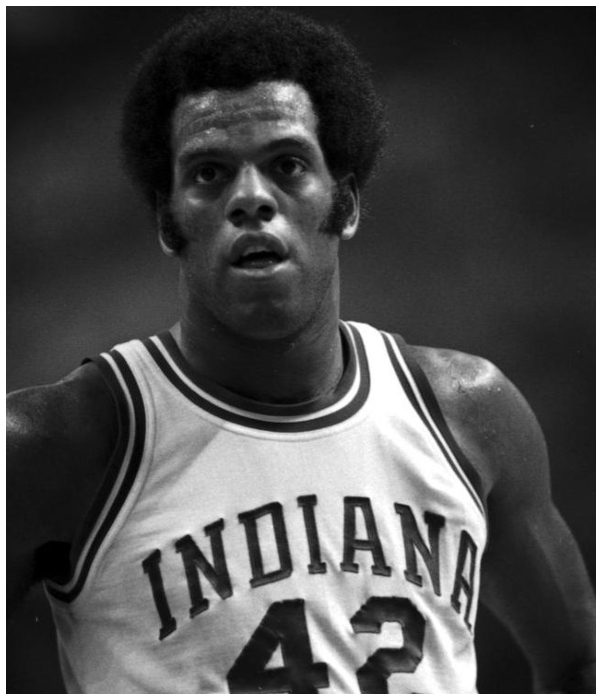
He was drafted No. 2 in the NBA draft overall. His career was only marginally better than Darko Milicic’s. He averaged 10.4 points per match but was expelled from the league in seven years.
Kent Benson, Indiana
Benson, another key member of the undefeated Indiana team, was also in Bloomington. He stayed one year longer than May and became No. 1 in 1977. For a few years, he was fine.
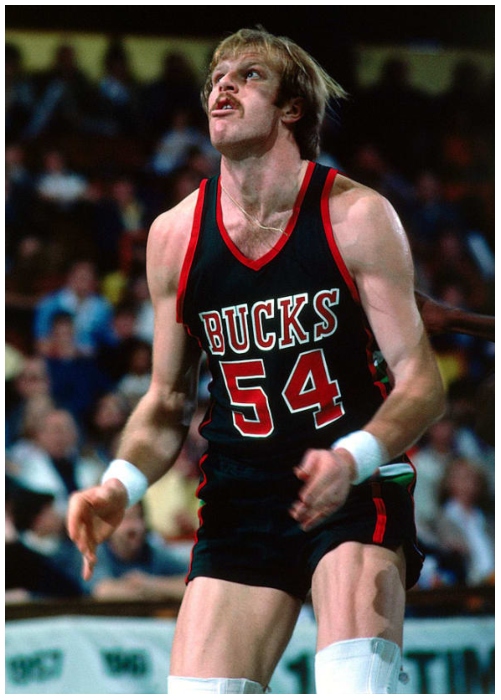
He reached 15.7 points per contest in his fourth NBA season. He scored 9.1 points per game and grabbed 5.7 rebounds in a career that saw him break his jaw by Kareem Abdul Jabbar.
Rick Mount, Purdue
Mount was the first high-school player to be featured on the cover of Sports Illustrated. He averaged over 32 points per contest during his three seasons at Purdue. He never played in the NBA. He instead went to the ABA and averaged 11.8 points per match.

After five seasons, he was dislocated from his shoulder, so he retired. He technically did not flop in the NBA, so we decided to not include him. Although it’s difficult to believe that he could quit so quickly.
Jay Williams, Duke
The No. 2 draft pick in 2002 had a very brief stint in the NBA. He played just one season before sustaining what would prove to be life-threatening injuries in a motorcycle crash. However, he had a decent rookie year, averaging 9.5 points and 4.7 assists.
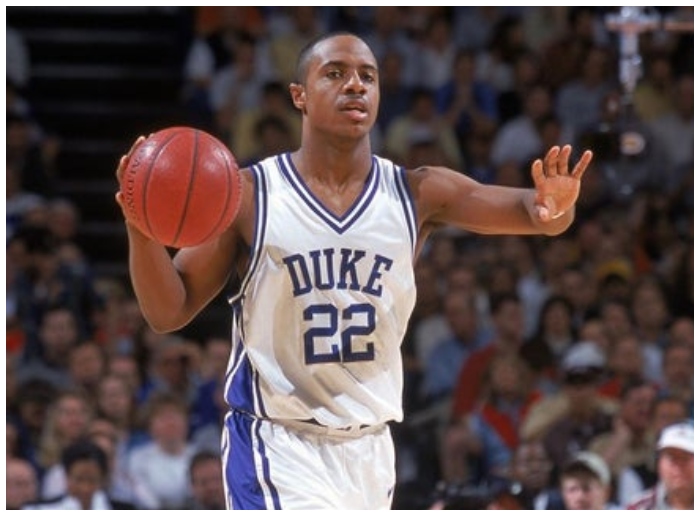
He seemed on the way to a good run in the pros. Although the draft pick was a bust in the end, placing him in the same category as these other flops is difficult.
Lionel Simmons, La Salle, and Christian Laettner, Duke
Simmons was the 1989-90 A.P. Player of the year who brought La Salle back to the forefront for the first time in decades. Two years later, Laettner was awarded the same award and was the most important (and least hated) contributor to Duke’s first and second national championships.
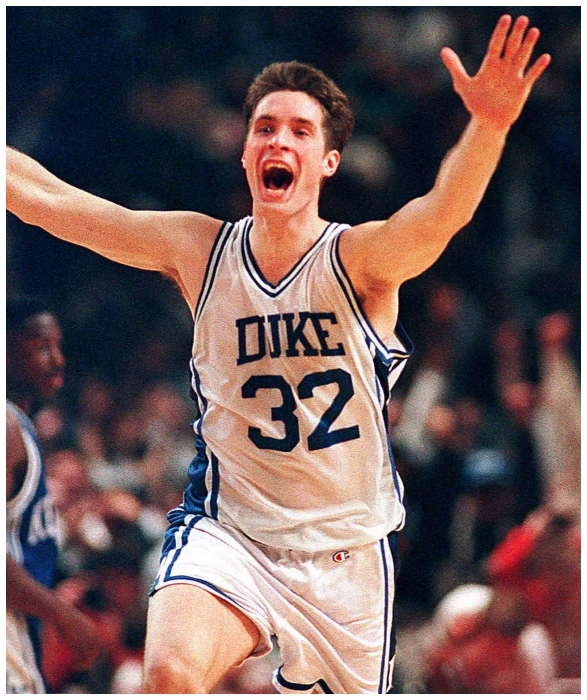
Although their stars were not as bright in the NBA, they were still adequate. Each man averaged 12.8 points per game during his career. Simmons retired at 28 after only seven years, while Laettner lasted 13 years. Most of these guys didn’t average even half as many points, and no one played as many games as Simmons (454) or Laetner (868).